
RSVP
出租7个月收1万8 明州华裔乐当民宿主人
世界新闻网
8/13/2022

住在明尼苏达州的白东颖,2020年1月将自住的四房两卫独栋屋加入Airbnb出租,尽管随后因新冠疫情暂停营运一年,但今年顺利把三个房间租出,短短几个月就有1万8000多元收入,足够支付整整一年的房贷,他因此希望把这段在Airbnb当房东的经验分享给有兴趣的人。
白东颖2015年从台湾移民明州,他在美国旅行时使用Airbnb平台租房深感便利。2019年他首次购屋后,先出租一个房间给同事,但之后房客难找,干脆转向Airbnb开放出租其中一个房间,一段时间累积佳评后,他又陆续把另外两个房间出租。
目前一百多个客户评比中,在沟通和房间描述准确(accuracy)两项得到客人五星好评,其他评比均接近满分。房客欣赏白东颖的友善与认真协助,更对他领养的两只猫喜爱有加。
白东颖说,他一开始先调查了附近民宿价位,再稍微降低了自己的租金,借此增加客源,等累积到一定的优良评比后,才慢慢调涨租金。他说,平台也会提供旺季或例假日的市场行情价(smart price)给房东当定价参考。
硅谷 101 — 有趣的前沿科技深度视频
至于很多人顾虑的安全方面,他住家的前后门都使用智能锁,提供房客密码而不需要钥匙。白东颖说,还没有碰过房客犯罪或其他行为失控状况。他一般根据经验慎选房客,像是入住当天才加入平台的会员,感觉比较缺乏计划,因此他通常会拒租。另外,平台会提供其他房东对房客的评论,因此他也不收评论不佳的房客。
由于平台提供保险,因此他不怕家里东西遭窃,不过,他提醒好能提供照片当作证据。如果家里有东西遗失,平台建议房东先跟房客索赔,如果超过24小时没有回音就跟平台联系,然后保险部门会进行审核并理赔。
白东颖会向租客提供毛巾、沐浴乳等用品,但不提供餐点,房客也可以使用洗衣机。白东颖个性随和,与外向的房客聊天吃饭交互,他说目前接触到的房客多数来探亲,还有来应征工作或听演唱会、家里装潢需要短租、暑期实习生、下个月才能搬新家和旅游护士等。
他说,经营民宿的快乐哲学是:有人付钱给他打扫自家,东西被偷还有理赔的钱添购。他还提到,在明尼亚波利斯市以投资房做民宿,要申请短租执照,若是自住房也要申请许可证。报税时则可将水电、消耗品等列为减税扣除项目。
白东颖计划着再买一栋房子扩大民宿经营。他欢迎有兴趣加入平台者跟他交流,网址:www.airbnb.com/r/newu2463510,或电邮sasha.dy.pai@gmail.com。
税率低 年薪20万家庭纷迁佛州、德州等「阳光带」地区
世界新闻网
8/11/2022
个人理财协助网站SmartAsset分析2019、2020年的迁移模式的结果显示,自新冠疫情爆发以来,受到较低的税率、温暖气候等因素吸引,加上许多人于疫情期间退休,高收入家庭纷纷迁入「阳光带」(Sun Belt),其中佛罗里达州以显著差距领先各州。
这项调查以年收入20万以上家庭的净迁移率为标准,为全国50州及华盛顿特区排名;调查结果显示,最多高收入家庭迁入的前十州中,共有九州位于「阳光带」,包括排名前六州,佛州位居第一。
SmartAsset的分析报告将阳光带定义为横跨东南部至西南部的广大地理区域。
SmartAsset审查调整后总收入20万以上的家庭,并比对2019年纳税申报单与2020年纳税申报单的地点,再依照高收入家庭的净迁入率为各州排名。
硅谷 101 — 有趣的前沿科技深度视频
排名前十与各州迁入的高收入家庭数据显示,佛罗里达州以2万263户居首,其次是德州的5356户;之后依序为亚利桑纳州(5268户)、北卡罗来纳州(4713户)、南卡罗来纳州(3967户)、田纳西州(2743户)、科罗拉多州(2624户)、内华达州(2331户)、爱达荷州(2055户),以及犹他州(1503户)。
佛州是目前最受欢迎的移居选择,迁入佛州的高收入家庭数目是第二名德州的近四倍;前十榜单上的佛州、德州、田纳西州、内华达州不征州所得税。
全国迁出率最高的分别是加州与纽约州,各有近2万户高收入家庭迁出,是迁出第三高的伊利诺伊州的两倍多。
值得注意的是,迁出率最高的几州,其年收入20万以上的家庭比例仍高于平均;迁出率最高的前十州,高收入家庭平均占比为8.79%,然而全国纳税人的高收入家庭平均占比仅6.82%。
此外,虽然这些州的生活成本高,但收入中位数通常也高于阳光带各州。
硅谷 101 — 有趣的前沿科技深度视频
美国经济连续两季萎缩 经济衰退概率上升
文 / 李月霞
7/28/2022

(早报讯)美国经济连续第二个季度萎缩,提高了经济衰退的可能性,这是因为处于数十年高位的通货膨胀削弱了消费者支出,且美联储大幅加息抑制了商业投资和住房需求。
彭博社报道,商务部星期四(7月28日)发布的初步预估数据显示,第二季度国内生产总值折年率下降0.9%;第一季度萎缩1.6%。作为美国经济的最大组成部分,个人消费增长1%,较前一季度有所放缓。
接受彭博访问的经济师预期中值是国内生产总值(GDP)增长0.4%,消费支出增长1.2%。

两年期美国国债收益率大跌,因该报告降低了美联储进一步大幅度加息的可能性;美国股指期货仍然走低,美元抹去涨幅。
初步报告显示,企业和政府支出以及住宅投资下降;库存也拖累GDP。
一项剔除贸易和库存因素、衡量潜在需求的关键指标显示,实际国内销售总额第二季度下降0.3%,而前一季度则增长2%。
报告显示通胀如何削弱了美国人的购买力,以及美联储收紧货币政策如何削弱了诸如房产之类的利率敏感行业。这种疲软态势可能会引发市场对美国是否或何时陷入衰退的激烈辩论。

报告:离乡「成家立业」亚裔搬离220哩距离最远
世界新闻网
7/26/2022

美国民众成年之后,离开长大的家,远走他方成家立业的趋势正在下降中;联邦人口普查局(Census Bureau)与哈佛大学25日发布的报告显示,26岁前的成年且离家的年轻人中,高达90%仍住在原成长地500哩以内。
该研究指出,现在的26岁前的成年人,超过三分之二仍居住在自己自幼长大的周边地区,已经离家的年轻人中,80%仍住在原成长地100哩内,90%住在原成长地500哩内。
年轻人离家后的居住地与原成长地的距离,在族裔与收入上呈现差异,平均而言,亚裔年轻人的居住地与原成长地的距离最远,达220哩,白人则是190哩,西语裔为140哩,非裔则是130哩;而收入与搬迁地距离,通常呈现正相关。
亚裔年轻人迁入的前十大首选城市,依序为:洛杉矶、纽约、旧金山、华府、圣地牙哥、西雅图、圣荷西、波士顿、沙加缅度、芝加哥;洛杉矶与纽约也是唯一同时受到白人、非裔及西语裔年轻人青睐的城市。
千禧世代 倾向住原生地
年轻人往往是美国人口流动的主要带动力,当前指的是1981年至1996年出生的「千禧世代」(Millennials),而这份研究表明,年轻人的流动下降,而且就算搬迁,也倾向于住在原成长地附近。
另一方面,美国人口流动下降并非年轻人的专利,1950年代的时候,美国每年有20%的人口搬家,相当于五分之一;到了去年,此数字降至8.4%;美国人口流动减缓的原因,包括人口高龄化,双薪家庭数量增加,去年则有新冠疫情影响等。
不过对年轻人来说,「经济」是愈来愈多年轻人不愿远走高飞的首要原因;该研究发现,当前各地方如促进就业等经济政策,通常会优先嘉惠当地成长居民,这导致现在一地区的薪资成长额度,约有99%仅嘉惠于他们。
一名来自马里兰州蒙哥马利郡(Montgomery County)的21岁年轻人就说,住在原生地附近有一种「稳定感」。
新来此地的居民愈发难以享受到当地经济成长的果实,是年轻人愈来愈少远走高飞的主因;该研究报告就指出,很多人现在发现,原来自己的「经济机会的范围」,现在竟是如此地狭窄。
全现金买上海烂尾楼 南加华人巨亏300万
世界新闻网
7/25/2022

南加洛杉矶县亚凯迪亚市(Arcadia)一名华裔居民,几年前曾在上海购买一套房产,万万没有想到,如今房子没有拿到手,整个楼盘都已变成烂尾楼。这名华人欲哭无泪,当初全现金300万人民币(约45万美元)付清,现在交房遥遥无期。
Olivia一家来自上海,几年前移民到亚市定居,2018年2月她在上海崇明区购买了一套三居室的公寓房。她说:「买这套房子的目的是为了每年回上海探亲时居住,毕竟上海是我的故乡,虽然已移民美国,但在老家留一套房也是我的心愿。」
这套新开发位于崇明区长兴岛的楼盘当年十分火爆,名叫「大城小院」,开发商泰禾集团是一家从事住宅地产和商业地产的知名大型上市公司,在中国各大城市都拥有开发中的楼盘。 Olivia回忆,「楼盘预售时,场面非常热闹,每天都有几百人去看样品房,大家都在抢房。」

长兴岛「大城小院」楼盘共有公寓、别墅近2000套,Olivia说,因为很多人排队抢房,售楼处就用抽签形式,「现在想来,也许这是一种售房策略,让大家感觉只有运气好的才能抽中买到房子」。第一轮抽号Olivia没中,第二次抽号时天还没亮就赶到售楼处排队等候,「我清楚地记得那天上海很冷,但当听到自己的号码被选中时,我们一家人都非常激动,觉得很幸运,也感受不到冬天的寒意了。」
Olivia看中的这套公寓房定价300万人民币,面积100平方米左右,因为长期定居洛杉矶,在上海分期付款并不方便,Olivia就决定全现金付清房款。按照合同,两年半后交房,但在2020年2月底,离交房还不到半年时,Olivia在上海的父母收到一封信,信中称,「因疫情不可抗力原因,该项目或将适时顺延」。既未提及何时交付开发商,也未对延期赔偿做出任何承诺。
Olivia还安慰父母,「疫情确实严重,楼盘停工也是理所当然,不要着急,这么大的楼盘不可能出现什么问题」。Olivia对故乡上海充满信心,「我以前总认为,即便全国各地出现烂尾楼,但绝对不会在上海发生,上海毕竟是国内排名前几的大都市」。
但紧接着,全国各地接连传来开发商泰禾集团楼盘停工消息,包括泰禾杭州院子、泰禾苏州金尊府、泰禾太原金尊府等,都出现延期交付或长时间停工状况。这让Olivia开始担忧,「我人在洛杉矶,因为疫情一直回不去,只能让上海的家人帮我经常去看房子」。

同时,Olivia加入这个楼盘的业主维权微信群,和她境遇相同的有1800多户业主,从群里她知道更多消息,「大部分人都是贷款买房,有些人卖掉自己原来的房子付了首款,在外面租房住,新房交不了,每个月还要付房租、贷款,很惨」。
对于近2000户业主来说,房款已付了四年半,交房依然遥遥无期,甚至至今没有复工迹象。 Olivia说,业主群里常有人去现场看房,「从现场照片来看,楼盘大部分的外建筑都已搭建好了,但就一直搁置在那里,不再动工,也没有人告诉我们后续将怎么发展」。


利率涨、房市冷 有意购屋者缩手
世界新闻网
7/24/2022

美国最大的两家房贷公司之一的房地美(Freddie Mac)7月7日发布消息称,过去两周,30年期固定贷款的利率下降了0.5%,其原因是对潜在经济衰退的担忧继续上升,而利率下跌给购房者带来了稍微的减轻。截至7月13日,30年固定利率的贷款利率为5.30%,15年固定利率的贷款利率是4.45%。
★曼哈顿房市 全美风向标
纽约苏富比国际地产部(Sothebys International Realty)资深经纪人David许说,曼哈顿房市是美国房地产的风向标。房贷利率的快速提高极大地影响了曼哈顿的房市。进入2022年4月,房市的交易量开始下降。
「与去年同期相比,今年美国房屋成交量下降28%。」他说,看房的人减少很多。在2021年,他每个月都能带六至十名客人看房,而且总能成交四、五套。但现在每个月只能带三、四名客人,一两个月才能成交一套房子。

David许说,曼哈顿的房市从2021年春季开始启动,到了初夏的时候,房市非常热。先是房租上涨,幅度接近30%。接着,房价开始上涨,达到疫情前的水平。2021年9月,他也在曼哈顿购买一个公寓,因为利率太低了。「我的30年固定利率是2.75%。」而在八、九年前,他在曼哈顿购买一个公寓的利率是3.6%左右。
2022年4月,美国通货膨胀率超过8%。他说,通货膨胀升高与联邦政府发出5兆元的资金有关。拜登政府上台以来,为了控制新冠疫情,增发了疫情控制、科技研发、失业补助、家庭补贴等费用。这些钱大都进入市场,导致股市、油价、运输等价格上涨,产品成本增加。
他说,过去如果房屋成交量下降,库存量会增加。但是,现在情况与以前不同,房屋库存量并未增加。「我们公司的分析师的解释是买家惜售。」由于市场不好,买家不愿意低价卖出,因此把准备销售的房屋拿回来了。他说,拿回来的都是500万元到800万元的房子。
★中国出境难 来美买房减
除了通货膨胀以外,还有其他的因素影响房市。他指出,虚拟货币就是一例。目前,最流行的虚拟货币是比特币(Bitcoin)和以太币(Ethereum)。截至7月13日,比特币的价格是1万9653元,比最高值6万8789元下降了71.44%。以太币的价格是1074元,比最高值4891元下降了78.05%。许多人在投资组合中包括了虚拟货币,虚拟货币下跌,对他们的房屋投资是有影响的。
David许曾经接待过许多中国富人买家。他说,过去很多中国人来曼哈顿看房,主要看300万元到500万元的房子。现在,虽然也有中国人来曼哈顿看房,但人数非常少。「他们手里有钱,因为没有地方投资,只好来曼哈顿买房。」他们买后就出租,用房租抵消地产税和管理费,少赚点。

他说,中国人看房的少,主要是他们出国不易。例如,现在,学生可以申请到护照,能够来美国留学,但是商务和旅游的人出不来,以前许多人靠这种签证来买房。有的人护照过期了,但是换不到新护照。以前,纽约市有很多中国观光客,现在没有了。「上海、北京发生疫情后,出国更难了。」
另外,中国人大都是现金买房。但是,现金从中国出来也很难。他说,学生家长可以给留学的孩子导出学费和生活费,在美国做生意者也能导出钱来。但是,若是汇钱出来买房,则无法汇钱,因为银行不给办理。「因此,中国买家减少很多。」
★通膨利率高 看房两极化
他说,在高通膨、高利率的情况下,买家看房也出现两极分化。一极是,有人只看100万元到300万元的比较便宜的房子;一极是,有人要看2000万元以上的豪华公寓。他说,有的人甚至连看了两次,很有购房的意愿。「在过去,我很少看到这种情况。」
投资房产是对抗通货膨胀的有效手段。他举例说,假如借款人年初借款100万元,期限为30年,利率是5%,将来要偿还本金100万元,但因为通膨率为9%,这个本金100万元到年底只值91万元。若是加上利息5万元,借款人用96万元还款100万元贷款,就等于赚了4万元,即100万元的4%。「如果不借100万元买房,就等于你亏损4万元。」

纽约万荣地产公司(Winzone Realty Inc.)老板潘小峰说,贷款利率一升,导致房地产交易量明显下降,看房者、签约者也减少了,因为大部分购房者都要贷款买房。他说,利率一升高,贷款买房的压力就增大,买房的动力就会减小。他说,对于那些不是很迫切的买家来说,许多人现在选择观望的态度。
贷款利率每天都在变化,而且是一直往上走。他举例说,截至6月24日,15年期限的固定利率是5.30%,30年期限的固定利率达到6.04%。「有的贷款公司的经纪已经传出话来,到今年底房贷利率要达到8%。」
他说,也有的购房者已经锁定了利率,但担心利率有变,就要求「手续办快一点」。银行也很配合,两个工作日内办好。他说,对卖家和房地产经纪来说,他们都想快一点。他表示,这些买家都已经锁定了贷款利率,即使利率以后升高,对他们没有影响。

★纽约房地产 今年走得慢
数据显示,纽约的房市今年走得慢了。以皇后区为例,今年4月房屋在市场上的停留期是3.8个月,5月是4.6个月。「今年6月的数据尚未出来,估计比5月的还要慢。」
万荣地产成立于2002年底,现有1200个房产经纪,是纽约市皇后区最大的地产经纪公司。从他的公司数据看,今年第二季度房屋的销量比第一季度下降12%。如果2022年第二季度与2021年同期相比,成交量下降20%。总之,2021年美国房市销售好,而今年以来开始下降了。
硅谷 101 — 有趣的前沿科技深度视频
他说,虽然利率提高,但有的人还是要买房子。他说,有的人家的孩子正好到了上学的年龄,因此要买一个好学区的房子。「我最近在长岛代理一栋房子,两天就卖掉了,因为房子位于长岛好学区。」他说,如果学区不好,就不容易卖掉。例如,有的房子位于好学区之外,放到市场上三个月了,至今没有卖掉。
也有人家人口增多,房子小住不下,也要买房子。例如,有的是一家人和姑姑、姊姊两家人住在同一栋房子里,生活非常不方便。「不管怎么说,他们一定要买房子。」他说,虽然现在房市很差,但如果有好房子,还是有人来看。
人们仍然喜欢在郊区买房,不喜欢在市内置业。统计数据显示,长岛纳苏郡(Nassau County)的房屋市场停留期是2.1至2.2个月,而纽约市皇后区的市场停留期是4.6个月,皇后区的房屋在市场上停留的时间,是长岛纳苏郡的「两倍多」。
纽约亿丰地产集团(SunAmerica)资深销售经理Ricky黄说,他的公司主要做三类房地产:商业地产、独立住宅和共有公寓(condo)。他说,从2022年4月,他就感到房市「不好了」。以共有公寓为例,在疫情爆发以前,纽约市的共有公寓就供过于求,价格下跌。但是,到了2021年底和2022年初,共有公寓市场出现一个「小阳春」。其后,市场开始下跌。

★房贷利率涨 贷款不够格
亿丰地产集团曾经代理过法拉盛的大型房地产项目天景(Skyview)购物中心和共有公寓。他说,尤其在纽约市华人集中地法拉盛,共有公寓的供给量过多,而且价格偏高。例如,一卧或者两卧的共有公寓都要价100万元。他说,有的公寓每平方呎要1300元,1000平方呎的公寓就要130万元,价格太高了。

他说,共有公寓每月还要缴纳管理费和地税。许多华人购买共有公寓是用于出租,房价这么高,还要缴纳其他费用,华人买家会认为「不合算」。而独立住宅则不同,价格一直比较稳定。他说,两年前,华人开始购买长岛的独立住宅,把房价炒得很高。
从今年4月开始,房贷利率开始上涨。过去,房贷利率在3%左右,6月涨到6%以上。「房贷利率一涨,屋主每个月支付的房贷数额就要增长。」他举例说,如果向银行借30年期限的50万元贷款,如果是3%的利率,每月还贷2000元。但是,如果是6%的贷款利率,每月还贷增加到2800元。
他说,按照美国房屋贷款的规定,每月还贷额占家庭收入的比例决定能否贷款。例如,若是每月偿还2000元,年入10万元的家庭可以贷款。若是每月还贷2800元,借款人的年收入要在年入10万以上。因此,有些人虽然签了购房合同,但是不能过户,因为利率提高后,他们的收入不够了。

★等疫情结束 盼房市好转
Ricky黄说,现在主要的问题是新冠疫情。如果疫情解决了,纽约市就没有问题。他估计,到了2023年,纽约市的房地产就会好转。他的根据是,新冠疫情现在的症状很轻,疫情很快就会过去。因此,人们都会回到办公室上班。到时候,曼哈顿的商业地产就会大涨。
商业地产的价格主要取决于所在地点。他说,纽约市曼哈顿的商业地产很难涨价,因为地税比较高。现在,曼哈顿空出许多的商业地产,没有人租。对于房东来说,如果租不出,同时也要缴纳地税,压力巨大。许多人购买商业地产是通过贷款。如果商业地产长期租不出去,房东持续缴纳房贷,就会受不了,就要出售房产。因此,现在曼哈顿的商业地产价格房价下跌。「如果现在购买,价格就很低。」除了曼哈顿以外,纽约市的其他地方的商业地产还算可以。
他说,纽约市是美国最大的商业城市。因此,只要美国不垮,曼哈顿就不会垮。因此,曼哈顿的地产出现问题的可能性很低。他说,过去许多人涌入纽约州长岛买房,把长岛的房价推高了。「长岛的房价涨得太多,将来就要回调。」

他根据自己的经验,估计通膨只会持续九个月。到了2023年,房市又会回来了。他建议,有钱不要放在银行,而是要放入房市。房市总会往上涨的。「如果是购买独立住宅,在纽约的任何地方都行。」
潘小峰说,他最近翻阅过去的广告数据发现,把2020年的房价与2010年和2000年时的相比,都是一直在上升。在美国,投资的渠道很多,如股票、期货、年金等,但他认为第一选择还应该是房屋,因为房屋可以保值增值。「投资房地产一定要有长远眼光。」
他说,华人社区的贷款经纪很多,都在推销自己公司的贷款。有的贷款经纪为了吸引客户,把贷款利率压得「偏低」,但批出来的贷款利率却很高,理由是「因为利率发生了变化」。他建议,在联系贷款经纪时,一定要同时与两、三家的贷款银行接触,然后进行比较,从中选择贷款利率最低的那家。「不过,成本是多交了一点申请费。」

学校密集的西圣荷西建游民中心? 居民反对
世界新闻网
6/30/2022

湾区贫富差距悬殊,无家可归是严重的社会问题,政府希望通过游民中心解决,但游民中心的选址再起争议。圣荷西市府为了解决无家可归者的问题,市府订出目标希望增建游民收容处,其中一个可能的选址地点是在西圣荷西与萨拉度加市的交界处附近,与库比蒂诺也不远,但由于当地附近有许多学校与学习中心,不少居民发声表达反对,认为可能危害社区及孩童的安全。
该地点位于85号公路与Prospect路附近,依照反对选择该地点的草根人士整理,光是当地方圆0.5哩之内,就至少有Blue Hill小学、Saratoga Star Aquatics、Christian Righteousness Education Center等13间公私立学校与教育中心。如果将范围拉到1.6哩,则更还有17所学校,像是John Muir小学、Christa McAuliffe小学、Miller初中等。

「这个地点就不是很合适,应该找其他更合适的地方。」活跃于该社区居民杨少华受访时指出,先前在北圣荷西Noble一代也有因无家可归中心选址而产生的类似争议,那时当地居民反对的理由之一就是该地公共交通不便。而西圣荷西附近也与Noble情况类似,公共交通并不发达,而且该地邻近也没有平价的购物商场,距离无家可归者可能工作的地点也恐怕不理想,选址上并没有合理性。
他进一步指出,另一方面,西圣荷西这一区块是学校极为密集的区域,公私立学校、课后班等很多,在学校密度这么高的区域打造无家可归中心,对学生与社区的安全有隐患。同时,该处其实也是住宅区,因此附近居民提出强烈反对。
28日晚上在圣荷西市议会中,许多居民前往发声,强调游民问题绝对是必须解决的社会问题,但是选址上应该要深入考虑。

许多居民也在近日与代表该选区的副市长琼斯(Chappie Jones)表达意见。琼斯助理则回信表示,圣荷西市府设置出必须要建造1000单位的无家可归住房的目标,而市议会也投票通过让市府职员进一步探寻各种可能的地点,其中在85号公路与Prospect路附近的地点就是在讨论的地点之一。不过,各项规画都还在研究之中,还没有最后的定案,要到真正的最后兴建,还有好几轮的程序与征集意见要完成。
草根团体在Change.org上发出请愿,并征求签名,目前已有接近800人连署。网址:https://www.change.org/p/say-no-to-the-homeless-tiny-home-on-prospect-road-saratoga-san-jose。反对的草根人士也呼吁,希望住在西圣荷西,以及萨拉度加,与离近的库比蒂诺居民,写信给第一区的民选官员琼斯,同时副本给其他区的市议员办公室,表达声音。琼斯电邮:chappie.jones@sanjoseca.gov。


客服电话:1 (888) 666-7723
客服邮箱:customerservice@huarenstore.com
独立日提前购,22款风靡华人圈的厨房小家电特惠推荐,速来选购!
州高等法院裁定 纽约市非公民投票法案违宪
世界新闻网
6/27/2022

史泰登岛州高等法院27日作出裁决,认定纽约市允许非公民投票选举市级民代的法案违反纽约州宪法;市府则表示正在评估下一步举措,预计将继续上诉。
市议会去年12月9日通过法案,允许80万拥有合法移民身分的市民投票选举市级民代,拥有合法工作身分并在纽约市居住至少30日的居民就可投票,包括永久居民(绿卡持有者)、包括工作签证(H-1B)持有者、参加实习计划(OPT)的国际学生及工作签证配偶(H-4)等EAD工作许可卡持有者等,可以选举市长、市主计长、公益维护人、各区区长、市议员等职位,该法案已于今年1月生效。
然而,该法案生效后随即遭到一众共和党民代和选民团体诉讼,认为该法案不符合纽约州宪法,而且选民的投票权将被稀释;法官波尔齐奥(Ralph Porzio)在裁决书中表示,纽约州宪法明确规定了公民需要达到一定年龄和住址要求才可以参加选民登记并投票,其中就强调了「公民」一词。

他说,纽约州选举法也明确规定只有公民有投票权,纽约市通过的这项法案超出了州宪法的授权范围,若要允许非公民投票,须全民公投修宪。
根据市府数据,全市约有80万8000名成年移民拥有合法工作身分,其中13万为多米明尼加裔,11万7500人来自中国;法案通过后,非公民将在2023年的市议会选举中首次参与市级选举的投票。
波尔齐奥说,尽管投票权是公民的天然权利,纽约市也不能将州宪法对投票权的规定排除在外;他也同意原告提出的意见,认为允许非公民投票将稀释选民的投票权,也将导致参选人改变竞选方式;「虽然法案对原告尚未造成伤害,但此种伤害很快会发生。」
共和党各级民代对这一裁决表示欢迎;市议会少数党领袖博莱利(Joseph Borelli)表示,「今天的裁决证明,那些能够读懂州宪法中直白英文的人都能明白,非公民投票在纽约州是非法的。」州共和党主席兰格沃斯(Nick Langworthy)则表示,这项裁决是公民权利、选举公正性和法治的胜利。
市长亚当斯(Eric Adams)的发言人莱维(Fabien Levy)则表示,市府正在评估下一步举措;该法案的其他移民团体支持者则表示,计划到州最高法院上诉庭(State Appellate Division)继续提出上诉。

金山教委会:洛威尔高中恢复择优录取 23-24学年实施
世界新闻网
6/23/2022

在旧金山教委会22日召开的特别会议上,教委投票以4:3否决了洛威尔高中(Lowell High School)继续采用抽签录取,要求在23-24学年恢复择优录取制度。
三位由市长布里德委任的教育委员徐安、Lainie Motamedi、Lisa Weissman-Ward,与教委会主席林谦悦投了否决票。疫情爆发之后,洛威尔高中于2021-2022学年与2022-2023学年采抽签录取招生。
积极参与校区活动的华人家长招霞指出,华人家长为此争取了两年多,校区听到了我们的声音。校区应该考虑在学业上有天赋的学生的利益,制定符合所有人利益的正确政策,不能因为华裔学生的优秀和聪明而忽略了对他们需求的关注。招霞同时鼓励华裔民众应积极投票参与政治,用选票、用行动发声,维护自身的权益。
洛威尔高中招生改制两年来一直备受争议,对疫情期间临时实施的抽签招生制,校区学监曾提出再延长一年,引起家长和社区的强烈反对。华裔家长多次到校区抗议,强烈要求恢复择优录取制。此前教委会也多次召开特别会议,听取民意,并最终于22日下午投票表决。
多年来,洛威尔高中因缺乏多元化、非裔比率低、校内歧视频发等,被要求招生改制。2020年教委会在巨大争议中通过决议案,决定永久改制,以抽签代考试择优。决议案表示,教委、学监、学者和社区成员一直批评洛威尔高中招生有选择性,按考试成绩录取,让白人至上主义得以延续,为非裔和拉美裔学生带来种族歧视。改制风波也成了今年初罢免教委选举的主因。

永久改变招生政策也招来诉讼。旧金山市高等法院法官在2021年11月裁定,洛威尔取消择优录取制决议案违反加州法律。近期,总学监马菲斯(Vincent Matthews)再提延长抽签制,原因是没有足够研究招生制度,遭到华裔家长强烈反对。并三次在学区委员会门前抗议。
洛威尔改用抽签制收生后,成绩获得D和F的学生显著增加,但报导指出,考虑到疫情影响,目前尚不能断定招生政策的变化究竟在多大程度上造成了洛威尔高中九年级D和F分数增加。
华裔教委徐安是罢免教委的主要领袖之一,她明确支持洛威尔高中返回原来的择优录取制度。她表示,旧金山市大部分选民已经用选票表达了对择优录取制度的看法。
当天参加特别听证的发言者中,多表示支持恢复择优录取制度,期望教委会听取家长、学生与社区的声音,做出正确的决定。
教委会主席林谦悦表示,洛威尔高中并不完美,很多制度还在完善,希望教委会做的决定能够治愈社区,为社区各族裔共同服务。



专家示警远距教学恐影响注意力 吁家长应变改善
世界新闻网
6/21/2022

受疫情影响,台湾中、彰、投等县市停止实体上课,维持远距教学至暑假,但专家示警,长期使用3C产品恐影响注意力、口语沟通及人际交互,甚至依赖成瘾产生负面情绪,建议家长应提前预防应变,若已有负面行为状况可就医寻求专业协助。
南投医院职能治疗师柯孟蓁指出,有研究发现儿童在观看电视、使用3C产品的时间越长,其注意力不足、分心及过动现象越明显。且当照顾者越依赖3C产品,也易影响到孩童使用3C产品的使用方式,很可能使孩童有负面的情绪行为产生。
此外,长期使用3C产品远距教学除造成注意力问题,也使得群体生活、与他人交谈交互的时间大幅减少,进而影响儿童口语表达沟通与社会人际交互的表现,甚至造成沉迷网络、3C成瘾等状况,柯孟蓁建议家长可通过4个方法预防应变。
柯表示,首先,照顾者及儿童皆须有正确使用3C产品的观念,照顾者尤为重要,须了解3C产品对自己与孩童可能的影响及优缺点,指导或给予儿童及青少年正确的3C使用规范,适时中断使用时间要求休息,较能避免3C产品依赖与成瘾。
客服电话:1 (888) 666-7723
客服邮箱:customerservice@huarenstore.com
再来就是,照顾者若时间允许,建议尽可能陪着孩童使用3C产品,进而知道孩童在使用上课及游戏的状况,并过程中及时导正使用方式;第三就是,创建3C产品使用时间表,如课表班安排可使用3C时段,并严格运行时间表的调度。
最后也最重要的最后一步,就是提供孩童适当的休闲娱乐活动,柯孟蓁说,疫情期间较不适合出游,照顾者可使用桌游、美术劳作折纸等实体益智游戏或静态活动,让孩童在游戏之余加强练习注意力持续度、手眼协调、动作计划等能力。
若空间允许的话,还可以让孩童从事粗大动作的游戏与活动,如到跳绳、攀爬等活动,除了可以练习动作的控制,还能增加肌耐力。
南投医院也提醒,若照顾者有发现孩童已有注意力不集中、常常分心或常有负面情绪行为的表现,切勿轻忽,建议应至复健科寻求专业医师评估孩童的状况,如果有需要应及早介入治疗,以改善孩童的负面行为与状况。
四口之家养育子女 出生到17岁要28万元
世界新闻网
6/13/2022

农业部公布最新报告,全美超过1250万儿童生活在贫困之中,就连中产阶级家庭也越来越难以支付日常开支。
农业部这份报告采用2015年数据,该报告估计,家有两个成人、两个孩子的中等收入的四口之家中,养育一子或一女,从出生到17岁一共花费23万3610元,加计通货膨涨后,该数字到了2022年相当于将近28万6000元。
根据通货膨涨率调整可能还不够。事实上,儿童保育费用增幅已远超过通货膨涨, 2020年,儿童保育费用比前一年增长5.03%,当时的年通货膨涨率仅 1.2%。
经济政策研究所(EPI)资深经济学家古尔德(Elise Gould)说,目前全美许多地方的婴儿日托中心费用可能比州内公立大学学费贵得多。
经济政策研究中心资深研究员弗雷姆斯塔德 (Shawn Fremstad) 表示,美国这一类的家庭政策向来非常保守,政府不愿好好想办法解决人民困境。
布鲁金斯研究院(Brookings Institution)经济研究员鲍尔(Luren Bauer)说,美国儿童保育系统拼拼凑凑,这是一大问题;他进一步提到,政府备有方案为条件符合的儿童提供全额补贴、有税收抵免可补贴高收入家庭部分儿童保育费用、向各州提供款项以扩大协助范围,但问题在于,即使有各式各样方案,却欠缺普遍性或者可负担性。

蒙受通货膨胀沉重打击 美国家庭每月多掏460元
星岛日报
6/11/2022
政府公布最新的通胀增幅达到8.6%,对学者专家而言意味着经济亮起红灯,但对普通民众来说却是实实在在的冲击,平均每个家庭每月要额外支出460元。
《纽约邮报》报道,劳工统计局10日公布数字时,各类消费当中粮食和燃油的价格升幅最大,偏偏这2项都是生活不可或缺的必需品,百姓尤其深受其苦。
穆迪分析(Moody’s Analytics)的高级经济员斯威特(Ryan Sweet)表示, 2018年和2019年之间通胀率为2.1%,如果参考当年的数字,再结合今年的物价升幅,每户民众的平均开支实际上增加了460.42元,和2月份的275元增幅相比,负担更加沉重。
细数各类物价,5月份的能源价格比去年同期上升34.6%,创下2005年9月以来最大的年度升幅,单单计算燃油的话,价格 升幅度更达106.7%,根据美国汽车会(AAA)的统计,截至10日时,全国普通无铅汽油的每加仑平均售价为4.986元,无论是以汽车代步的民众,还是需要长途跋涉的职业司机,都需要付出更高成本。
其他物价方面,机票按年贵了37.8%;新车及货车贵了12.6%;电力贵了12%;外出用餐贵了9%;各类生活杂货的成本上升11.9%,其中鸡肉和碎牛肉的涨幅分别达到17.4%和13.6%。
面对物价持续失控,不少经济专家担心联邦储备局为了遏止通胀,可能大幅度加息,继而导致经济衰退。也有评论质疑,通胀炽热的其中1个原因,是联邦政府在对抗新冠疫情期间,接连几次推出数万亿元的援助方案,过程中虽然帮助了商界和民众度过难关,但也流通货币大为增加。随后俄罗斯2月底出兵乌克兰,包括美国在内的西方国家纷纷制裁,也令国际油价急涨,使得情况变本加厉。
除此之外,疫情期间全球供应链混乱,芯片生产也短缺,无论是新车还是二手车售价都明显上升,除了新车涨价12.6%之外,二手车的价格增幅更达16.1%。
食品方面,肉类、家禽、海鲜、鸡蛋的价格升幅惊人,其中蔬果的增幅虽较温和,但也达到8.2%。

油价创新高 每加仑4.71元…去年才3.04元
世界新闻网
6/03/2022

美国通膨狂飙,汽油价格2日站上每加仑4.71元的新高,更有七个州每加仑油价冲破5元;洛杉矶一座加油站甚至出现每加仑8元的超高价;石油输出国组织及伙伴国(OPEC Plus)2日集会虽同意日增产64万8000桶原油,但并未让油价明显下跌。
驾驶人掏空钱包 心情沮丧
「每日邮报」2日以「拜登通膨」(Bidenflation)撼动美国来形容这一波涨价的冲击;相较1日,每加仑汽油价格连夜涨了4分钱,汽车驾驶人看着油价节节高升,掏空他们的钱包,心情莫不沮丧;无论如何,这是全美50州首度平均油价都涨破每加仑四元。
全国平均油价较去年涨一元以上;去年此时为每加仑3.04元。
西岸地区受高油价打击最重,加州及内华达汽油牌价最高;加州全州油价平均每加仑在六元以上,人口最密集区如洛杉矶更上到八元;内华达平均油价5.36元;夏威夷、华盛顿、俄勒冈三州则在5.20元波段。
洛城冲破8元 洛郡连涨4天
洛杉矶市中心某加油站5月31日每加仑油价格已冲破八元;全洛杉矶郡油价连四天上涨,同日平均自助加油每加仑6.172元。
乔治亚及阿肯色两州算油价最便宜州,平均每加仑分别在4.19及4.23元;东北部每加仑油价可望维持在低于五元。
中西部各地油价不一,范围在每加仑4.50到5.26元之间;大平原区均价在4.36到4.77元;南部油价最便宜,每加仑在4.19到4.33元。
OPEC Plus各国2日视频集会后同意每日增产64万8000桶原油,相形去年同意计划在7、8月增产的43万桶,要增加约50%;但集团会后发出的声明指出,增产是因应中国等国解除疫情封锁,没提到华府施压增产以因应油价上涨。
沙特阿拉伯想改善与拜登政府关系;拜登政府一直想避免油价高涨伤及美国经济,同时担心11月期中选前让选民疏离民主党;但利雅德当局也不打算破坏与莫斯科为期五年的石油联盟;两国目前都是OPEC Plus的领头羊。
油价在OPEC Plus集会前曾下跌,但会后声明发表后回涨;美国油价指针的西德州中级原油涨幅近1%,冲破每桶116元。
白宫发言人尚皮耶(Karine Jean-Pierre)表示,美国欢迎OPEC Plus达成重大决定,7、8月日供应量增加逾20万桶,以因应市场新状况。
纽约州1日起免燃油税 每加仑省0.16元
世界新闻网
6/01/2022

通货膨胀已经让民众生活成本急剧飙升,纽约州长霍楚(Kathy Hochul)6月1日宣布,纽约州从即日起至今年12月31日停收燃油税,预计将让民众每加仑节省0.16元油费;同时,州府也授权各地方政府减免地方燃油税。
此项燃油税减免此前已纳入州府新财年预算案,根据州府信息,州府停收的燃油税包括州机动车燃油消费税(motor fuel excise tax)、州燃油消费税(State sales tax)和大都会通勤交通区消费税(Metropolitan Commuter Transportation District sales tax)。
霍楚表示,近几个月来燃油价格飙升,伤害到工薪家庭和小商业者的利益,「因此这项税费减免十分重要,相当于未来七个月将为民众总计减少6亿900万元燃油支出;目前民众正在经济不景气和通货膨胀中挣扎,我们将继续采取更多措施,减轻民众的财务压力,藏富于民。」
同时,州府还授权各地方政府继续减免各地的燃油税,目前全州已有20多个郡从6月1日起推出地方燃油税减免;例如,洛克兰郡(Rockland)等11各郡将仅对每加仑两元部分的燃油征税,纳苏郡、苏福克郡和威彻斯特郡等13个郡将只对每加仑三元部分的燃油征税。

夏季驾车出游旺季到 油价将维持「火热」
世界新闻网
5/27/2022

多国正加速解除防范新冠疫情的边境管制,加上美国夏季驾车出游旺季将在本周末正式到来,需求前景看升,但供应又不太可能大增。分析师指出,今年夏季的国际油价表现将维持「火热」。
彭博资讯报导,随着全球新冠疫情趋缓,至少已有55个国家取消入境防疫管制,包括英国、瑞典、瑞士、越南、阿根廷、墨西哥及以色列等,无论是否接种过新冠疫苗,抵达前后都无须接受检测与隔离。
一些国家甚至取消游客须戴口罩的规定,也不用填写旅客追踪表。
机票、饭店与度假屋价格的飙升,都意味着今年夏季可望成为「史上最繁忙的旅游旺季」。
美国夏季驾车出游旺季将于本周末正式到来,今夏炎热天候将推升空调需求,都将使燃油消费量大增,但俄罗斯入侵乌克兰所招致的制裁持续干扰供应、石油输出国组织与盟国(OPEC+)闲置产能减少、伊朗核子谈判陷入僵局,及炼油厂炼制产能吃紧,都难以使供应大幅增加。
彭博策略师指出,全球油市依然看多。沙特阿拉伯已暗示,石油输出国组织与盟国(OPEC+)下周不太可能加码增产,而,来自伊朗的供给也不太可能增加。
SPI资产管理公司管理合伙人伊恩斯说,油市动能看涨,许多因素显示原油供应可能更吃紧,尤其是欧盟可能禁运俄国能源产品。
不过,国际油市也仍有利空隐忧。美国与七大工业国集团(G7)都敦促OPEC+扩大增产,中国大陆防疫封控也引发成长前景的忧虑。
国际油价27日盘中涨跌互见,原因就是投资人忧心经济可能陷入衰退。
加州汽油「天价」旧金山每加仑近八元 洛杉矶紧追其后
世界新闻网
5/26/2022

ABC 7电视台报导,尽管加州目前平均每加仑油价约六元,然而旧金山一家加油站,油价却高达每加仑近八元的「天价」。相对的,洛杉矶油价也不便宜,当地司机知道他们为汽油支付的费用,比普通的美国司机要高,因为这是加州要求更清洁空气的代价,已经是加州 DNA的 一部分。
洛杉矶这个以汽车文化闻名的城市的驾车者可能没有意识到,他们支付的费用超过了全国平均水平,在3 月下旬比全国平均水平每加仑多了 1.80元以上。根据美国汽车俱乐部(AAA),这是至少十年来的最高水平 。
但到目前为止,加油站的汽油价狂飙并没有影响旅行计划,尽管每辆车油箱的成本要高出约 24美元,但 南加汽车俱乐部预测,这个国殇日周末将有 260 万当地居民上高速公路。 这比 2021 年增加 5%,但比新冠病毒( Covid-19 )大流行之前的 2019 年低了约 7%。
而位于北加州Menlo Park的雪佛龙(Chevron)加油站,普通汽油每加仑7.25元,高级汽油每加仑高达7.75元。「这个地方对我来说是方便的」,顾客Alisa Arunamate告诉ABC 7电视台,「当你有一群孩子且到处跑时,你别无选择。」
根据Lundberg调查,湾区的普通汽油油价可说全美最贵,每加仑平均6.20元,奥克拉荷马州Tulsa最低,每加仑3.92元。
过去两周,全美普通汽油平均价格,每加仑飙升33分至4.71元,最主要原因,是数千万人准备在繁忙的周末上路出游。此外,在全国范围内,泵的价格比一年前高出1.61元。
Lundberg调查行业分析师Trilby Lundberg日前表示,油价上涨是因原油成本上涨和汽油供应紧张所致。
拜登(Biden)政府和许多民主党人指责石油公司哄擡价格,共和党人则表示,白宫应该支持美国境内石油和天然气钻探与开采。
湾区上月物价飙 21年来最大涨幅 普通无铅汽油全年涨43.5%
世界新闻网
5/12/2022

一份11日公布的最新政府报告显示,湾区4月消费者物价飙升,涨幅几乎与2月公布的21年来最高涨幅打成平手。
美国劳工统计局11日公布的报告指出,湾区4月的通货膨胀率以每年5%的速度大幅上升,仅次于2月时的5.2%。根据圣荷西信使报(Mercury News)对追溯至1990年的数据进行分析,湾区今年至今的通膨年增长率,是2001年年中以来最高,这对居住在生活成本原本就高昂的湾区消费者来说,压力很大。
鸡鸭鱼肉、早餐麦片、奶制品等食品成本、汽油价格和太平洋瓦电(PG&E)费率的大幅上涨,都是造成湾区通膨年增长率显著上升的推手。
住在圣荷西的梁女士(Elizabeth Leong)11日在住家附近加油站接受采访时说:「我是一个依靠固定收入生活的老人,所以物价飙涨对我的影响真的很大。」
劳工统计局的报告指出,全美4月的通膨年增长率高达8.3%,接近40年来的最高纪录。经济学家表示,湾区和美国的通膨年增长率有显著差别,主要是因为在现阶段通膨飙升之前,湾区的消费者物价就已经非常高,例如油价和住房成本早已远高于美国其他地区,所以湾区的通膨增长率会低于全国平均。
湾区4月消费者物价全年涨幅最大的民生必需品包括:普通无铅汽油上涨43.5%、家用天然气上涨23.4%、二手车上涨22.3%、鸡鸭鱼肉蛋上涨19.3%、电力上涨18.2%、早餐麦片和烘焙食品上涨15.1%、在家煮食上涨13.9%、奶制品上涨12%、所有粮食上涨10.2%。
除了物价飙涨,消费者现在还面临利率上升的威胁;因为担心通膨会造成经济失控,美国联邦储备局上周将利率提高了半个百分点,央行官员认为,稳步提高利率将有助遏制消费者物价飙升,然而加息也有可能抑制经济活动和就业机会的增加。
灯塔经济(Beacon Economics)经济学家桑柏格(Christopher Thornberg)认为,美国可能正走向自1970年以来最严峻的经济情势,当时就业机会减少和高利率同时威胁到经济,是一种罕见但具有破坏性的现象,称为「停滞性通货膨胀」(stagflation)。
桑柏格说:「美国经济已经过热、过度支出、过度膨胀,就像一辆汽车以120哩的时速,从山坡上朝一辆停在山下的卡车冲下来,但又担心万一刹车踩得太用力,会让汽车打滑。」
美国梦变成了噩梦:美国中产阶级的愤怒
来源:纽约时间
5/01/2022
杰夫·斯沃普(Jeff Swope)今年2月得知房东将隔壁那套两居室空置公寓的租金提高了30%以上,达到每月2075美元,他第一次感到愤怒。
42岁的斯沃普是一名教师,他的妻子阿曼达·格林(Amanda Greene)是一名护士。尽管他们的年收入为12.5万美元,但他们无法承受如此大幅的租金上涨——再加上学生贷款、汽车贷款、水电费和其他三口之家不断增加的所有成本。“这种挫败感就像温水煮青蛙一样,”斯沃普在他简朴的公寓里说,“我们眼睁睁地看着租金飞涨,心里想,好吧,这也太荒谬了。这是在搞什么名堂?”
35岁的珍·杜威-奥斯本(Jen Dewey-Osburn)住在凤凰城郊区,当她计算自己欠了多少学生贷款时,愤怒爆发了:她借了22624美元,还了34225美元,但她现在还欠43304美元。她和她的丈夫知道他们比大多数人都幸运,毕竟他们都有不错的工作,但他们觉得在财务上太吃力了,因此无法想象再添个娃会怎样。“我们在道德、身体和情感上感到疲惫,”她说。“没有正确的选择;好像怎么选都是错。”
26岁的奥马尔·阿卜杜拉(Omar Abdalla)的愤怒在他第12次购房竞价失败后达到了顶峰,他觉得相比他和妻子,他身为第一代美国移民的父母能拥有更多的财务稳定。他们都有很好的大学学位和很有前途的职业,但他们存下的9万美元作为首付,在卖家那里完全没有竞争力。
相比之下,阿卜杜拉的父母拥有两套房子,他岳父母有四套。“他们从房子上赚的钱可能比他们工作赚得更多,”他说。“相比之下,我名下没有一项资产能让我安枕无忧,这就是让我心碎的部分。”

美国中产阶级家庭几十年来一直举步维艰,收入增长停滞,物价上涨,而疫情引发的通货膨胀尤其让他们对前途倍感迷茫。疫情之初,他们似乎有了一个赶上来的机会:他们保住了自己的工作;由于企业难以找到工人,他们的工资开始以更快的速度上涨;他们存钱的速度也比之前几十年更快。皮尤研究中心(Pew Research)的数据显示,大约三分之一的中等收入美国人认为,在疫情爆发一年后,他们的财务状况有所改善,因为他们被隔离在家里,同时受益于政府发放的救济金、儿童税收抵免和暂停联邦学生贷款还款。
但18个月后,他们越来越怀疑,任何财务安全感都只是一种幻觉。他们的银行存款可能更多,但在美国,成为中产阶级不仅仅关乎你赚多少钱;而是你能用那笔钱买什么。有些人以一个家庭是否在地下室有第二个冰箱或在院子里有一棵树来衡量,但布鲁金斯学会的中产阶级未来计划主任理查德·里夫斯(Richard Reeves)说,真正重要的是人们是否觉得他们可以轻松负担“三H”:住房(housing)、医疗保健(health care)和高等教育(higher education)。
仅去年一年,房价就飙升了20%,所有商品的价格上涨了8.5%。与去年相比,今年美国家庭在消费价格指数(CPI)所追踪的基本商品和服务上的花费增加了3500美元。相比之下,经通胀因素调整后的平均时薪下降了2.7%。这种压力让许多自认为是中产阶级的人难以负担得起“三H”,尤其是住房。根据密歇根大学的消费者调查,今年3月,美国消费者信心降至2011年以来的最低水平,更多的家庭表示,他们预计自己的财务状况将恶化,这比1980年5月以来的任何时候都要多。
“我们的座右铭是:努力工作,付出应有的代价,你会得到回报。但你的目标总是越来越难以够到,”36岁的丹尼尔·巴雷拉(Daniel Barela)说,他是新墨西哥州阿尔伯克基的一名空乘人员,他非常清楚他的父亲在他这个年龄已经有了自己的房子和四个孩子。巴雷拉和他的伴侣去年共赚了大约6.9万美元,他觉得自己成年后的大部分时间都缺钱。他在经济大衰退期间失业,2008年一家大型信用卡公司将他的贷款利率上调至29.99%后,他不得不申请破产。
他说:“无论我从事什么样的工作,无论我做了多少工作,似乎都买不起自己的房子。”
像巴雷拉这个年龄段的人构成了今天的大部分中产阶级,但是,即使他们赚得比他们的父母更多,即使他们有大学学位和一份光鲜的工作,即使他们有地方住,有iPhone,有平板电视,但许多人现在感觉到,尽管一路循规蹈矩,但他们在财务上极其脆弱。家庭年入超过12万的斯沃普说:“我们的收入理应使我们成为中上阶层,但事实却并非如此。如果你是中产阶级,按道理你有钱做些好玩的事情,而我们不行。”
一代不如一代
《时代》杂志采访了全国数十位收入处于美国收入中60%的人,这就是布鲁金斯学会定义的中产阶级。对于一个三口之家来说,这意味着年家庭收入在42500美元到166900美元之间。以下是我们听到的:
“美国梦绝对是一场噩梦,我现在不想再陷入这场噩梦中。”
“这真是令人挫败极了。我失去了希望。不知道该怎么办才好。”
“我们做了我们应该做的事情——但我们的负担太重了。”
“我赚得比以往任何时候都要多,但我还是买不起房子。”
“我已经在这里扎了根。我不想被迫离开。”
许多人提到了对父母或年长同事的不满,因为对方不理解为什么年轻一代没有像他们那样买一幢郊区别墅或还清大学债务。“婴儿潮一代能做最低工资工作的同时,还能开开心心地生活——去国家公园玩儿啦,生儿育女买房子啦,这对我们来说是不可能的,”朱莉·安·尼奇(Julie Ann Nitsch)说。她是奥斯汀的一名政府工作人员,她的房东决定要在5月份将她出租的房子挂牌出售,之后她就不能再在她服务的县居住了。
他们说得有道理。随着房地产价格涨幅超过通胀水平,拥有住房的愿望一代比一代难以实现。根据城市研究所(Urban Institute)的数据,1980年,35岁至44岁的人群中有超过70%拥有住房,但到2018年,这个年龄段的人买房的比例不到60%。截至2019年底,自有住房总价值飙升至29.3万亿美元,这造成了一种分化,让拥有住房的年长美国人富裕起来,却将无力进入市场的年轻一代拒之门外。
千禧一代和更年轻的一代在几十年来最严重的经济衰退中成年,进入工资增长缓慢的就业市场,然后在疫情开始时经受了又一轮衰退。在此期间,成本持续上涨。家庭收入中位数自2001年以来仅增长了9%,但大学学费和其他费用同期增长了64%,自付医疗费用翻了近一番。在所有80年代出生的孩子中,只有一半长大后收入超过父母,而在40年代出生的孩子中,这一比例超过90%。彭博社的数据显示,与婴儿潮一代在40岁时相比,千禧一代和X世代的净资产更低,债务更多。
他们的担忧关系到更大的美国经济。正如乔·拜登在2019年所说,“当中产阶级处境不错时,每个人都会非常非常好。富人会特别好,穷人也能看到一些光明,一个机会。他们的想法是,‘也许我也能找到一条向上的出路。’”
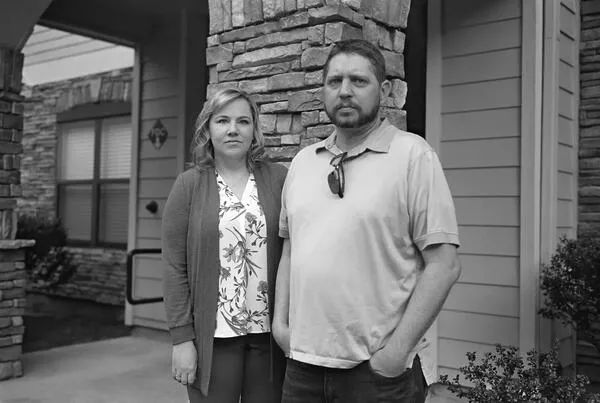
在失业率处于历史低点的情况下,如果中产阶级感到自己被几十年来最强大的经济体排除在外,这是一个严重的迹象,表明社会不和谐即将到来。现在,没有大衰退,没有科技泡沫,也没有复杂的房地产投资产品崩盘来解释为什么房市如此紧张。从表面上看,美国经济看起来欣欣向荣。但就像斯沃普所说的温水煮青蛙一样,许多中等收入人群意识到他们正处于水深火热之中。“这不是凭空冒出来的火山,”布鲁金斯学会的里夫斯说。“在某种程度上,我们已经看到了经济中的这些长期变化,比如工资增长缓慢和向下流动。经济构造压力可能需要一些时间才能充分建立,而现在火山正在喷发。”
Email: OaktonAcademy@gmail.com
https://www.oaktonacademy.com/
三座大山,以住房最严重
在过去的几十年里,三H的成本都在飙升,但引发当前诸多不满的是住房成本——通常这是所有家庭最大和最关键的支出。几十年来,除了2007年至2009年的一次下跌,房价一直稳步攀升,但在过去的一年里,房价增长达到了疯狂的地步。很少有地方能幸免;超过80%的美国都市区房价上涨了至少10%。在斯沃普和格林居住的亚特兰大都市区,房价中值为40万美元,较去年上涨了7.5%。(他们认为自己能负担得起一套30万美元的房子。)
推动房价上涨的因素有很多,包括经济大衰退后建筑业滞后、短期租赁房屋的增加、机构投资者购置独栋房屋的投机行为、建筑材料短缺,以及劳动力和供应链问题。家庭想要花掉自己存下来的钱,婴儿潮一代在疫情期间想要留在家里,千禧一代急于成家,这些需求不断增长,加剧了这些问题。
最近的购房热潮已经得到了充分的证明,但在许多地方,租房者的处境比买房者更糟糕。2021年,一些州的房租上涨了近30%,预计今年还会进一步上涨。37岁的大卫·罗宾逊(David -Robinson)在凤凰城出生长大,现在与女友和三个孩子住在马里维尔(Maryvale)一套简陋的三居室公寓里,他认为那里算是城中较为低档的地区。去年9月,在“某家位于华盛顿州的物业管理公司”买下了他们所住的这栋楼后,房租从每月1200一下跳涨到2200,他说,他现在的房租约占他作为一名公用事业测量师收入的50%。
他说:“现在买了衣服、食物,支付了水电等其他账单之后,我们基本上就没有任何存款了,一家人根本没有钱进行任何娱乐活动。”他希望他们的车能撑得更久一点,更别说他们的健康了。
杰夫·斯沃普的妻子阿曼达·格林(Amanda Greene)知道这种感觉。在她的吉普切诺基意外报废后,她将车子降格为丰田卡罗拉(Toyota Corolla),为此还要贷1.9万美元。在她嫁给杰夫并加入他的健康计划之前,她和她7岁的女儿通过雇主获得的医保每月要自付1400美元。格林患有慢性病,需要定期进行大量检查,因此她选择只买自己的保险,女儿看病完全自费。她说,目前她还有数千美元医疗费要还,因为她的保险不负责报销。
在过去20年里,医疗费用的上涨速度通常快于通货膨胀,这主要是由于医疗费用上涨以及人口老龄化。1980年,经通胀因素调整后,全国人均保健支出为2968美元;到2020年,这个数字增加了4倍。大流行加剧了挑战,因为许多人失去了工作和因此获得的医保。根据Commonwealth基金进行的一项调查,在疫情期间感染新冠或失去收入的成年人中,有一半以上也在为医疗账单而挣扎。
随着大学教育成本增长、联邦政府对公立大学的资助暴跌,第三个H,也就是高等教育也越来越昂贵。随着学费上涨,越来越多的学生申请贷款。2020年,平均学生贷款债务为36635美元,经通胀因素调整后大约是1990年的两倍。许多家庭几十年来需要为还学生贷款而挣扎。格林当年是在一所私立大学获得了护理学位,她以为这能让自己在职场拥有更好的机会。现在,她背着9.9万美元的贷款,而她的两个没有上大学的姐妹则没有债务。
总的来说,三H在斯沃普和格林的实得工资中所占的比例越来越大。加上食品和水电之类开销,他们有好几个月的时间没有足够的钱开房租支票。他们已经够省的了:他们不下馆子,不买名牌货。虽然他们都是全职工作,但斯沃普正在考虑找份兼职工作。
一些经济学家认为,糟糕的会计核算掩盖了中产阶级的危险状态。前克林顿政府货币审计长尤金·路德维希(Eugene Ludwig)表示,CPI扭曲了中低收入美国人的真实经济状况,因为它还计入了游艇、第二套住房和酒店房间等可自由支配项目的成本。根据他的计算,家庭最低需求成本从2001年到2020年上升了64%,比通胀率快1.4%。今年3月,路德维希共享经济繁荣研究所(Ludwig Institute for Shared Economic Prosperity)发布的一份报告显示,房价实际上涨了149% (CPI计算为54%),医疗成本上涨了157% (CPI计算为90%)。
路德维希研究所执行主任斯蒂芬妮·艾伦(Stephanie Allen)表示:“我们发现,2001年的人们还有一点点可自由支配支出,但相比之下,到2019年,许多家庭,尤其是多子女家庭,都完全没有可自由支配支出。”(她说,疫情使得追踪这些数据过于不可靠,无法估计自那以后的可自由支配支出。)
老一辈人理解不了中年人的苦
三四十岁的人感到的压力和愤怒正蔓延到他们与父辈的关系中。如今,在美国,一个收入中等的家庭需要支付六倍的收入才能买到中等价格的房子。在1980年,只要两倍的收入就能买到。但许多婴儿潮一代似乎对他们孩子的困境不太能感同身受。
杰夫·斯沃普的父亲当年靠一名社工的薪水养活了一家三口,并在乔治亚州的桑迪·斯普林斯(Sandy Springs)买了一栋大约5万美元的房子,他的母亲去年以25.5万美元的价格卖掉了它,而那个买家今年3月再加价三成卖出。
对照来看,斯沃普2003年大学毕业,获得市场营销学位,找到了一份销售黄页广告的工作。当这个行业随着在线搜索引擎的普及而消失时,他一边做服务员,一边获得了教育学学位。2008年,他在经济大衰退期间毕业,没有固定工作,他只能做家教来养活自己。
直到2013年,他才得到一份公立学校入门级教师的工作。即使是现在,他5.5万美元的收入也不足以支撑三口之家。他和妻子格林申请了一笔抵押贷款的预批准,但一直没有收到回音。他觉得被困住了。“老一辈人看不起你,因为他们就是不理解,他们觉得除非你有房子,否则你就不是一个成年人,”他说。
有些人很难理解的一件事是,结构性变化的涟漪效应在他们年轻时才刚刚开始。例如,工会数十年来的衰落使得工人们更难通过谈判获得更好的工资和福利。斯沃普没有加入教师工会,因为乔治亚州不允许公共教育工作者进行集体谈判,这也是该州2020-2021学年公立学校教师的平均工资比1999-2000学年(经通货膨胀调整)低5%的原因之一。在有着强大教师工会的马萨诸塞州,同期公立学校教师的平均工资增长了19%。
在全国范围内,能提供医疗保险和其他福利的工作越来越难找。现在的零工工人比十年前至少多了600万。甚至像谷歌和Meta这样收入丰厚的公司也会将清洁、食品服务和一些技术工作外包出去,将许多在办公室工作的人排除在全职工作之外。


与此同时,自动化和技术的崛起势头不减,意味着越来越多的雇主希望聘用受过大学教育的员工。哈佛大学的一项研究显示,2015年,约三分之二的生产主管职位需要大学学位,而在已经就业的生产主管中,只有16%拥有大学学位。
空乘人员小丹尼尔·巴雷拉的父亲老巴雷拉不明白他的孩子们为什么过得不好。1984年,当他第一次搬到阿尔伯克基时,他做门房的时薪为5.4美元。他没有大学学位,但他在自己的公司努力工作,买下了房子。他和妻子现在在新墨西哥州拥有九处房产。
他说:“我这一代人——我们不会说一周工作40个小时后就躺平休息。如果你想要成功,40个小时只是起点,我们会不惜一切代价。这一代人,他们工作40个小时就累坏了。”
老巴雷拉有养老金,这是他这个职位的人今天得不到的。他承认现在的房价比他当年置业时要贵。但对于开出12到15美元的时薪找不到人来帮他修理出租屋,他也感到纳闷。“不只是我的孩子。我在其他孩子身上看到了这一点——他们就是不想工作,”他说。
这让他的儿子非常沮丧。他在航空业工作了很长时间,但仍然没有资格拥有自己的房子。他说,每当他加薪时,医保费和其他费用也会跟着上涨。这并不是他的托辞。根据路德维希研究所的数据,在阿尔伯克基,教师和救护车司机的年收入达到7.7万美元,比美国收入中位数的6.7万美元高了整一万,但他们每年仍需要背负6000美元的债务才能满足最低的适足需求。
中产阶级的崩溃
许多接受本文采访的人把不满指向了巨富阶层,这些人通过投资积累财富,当他们从投资中获取财富时,税率要比工资低得多。长期以来,中产阶级的普遍不满和萎缩一直与政治不稳定联系在一起。在经济严重不平等的时代,富人压迫穷人或穷人试图夺取富人的财富,这将导致暴力和革命。但范德比尔特大学法学教授甘内什·西塔拉曼(Ganesh Sitaraman)表示,中产阶级的存在帮助美国避免了这场冲突。这就是为什么他认为“今天对美国宪政的最大威胁是中产阶级的崩溃。”
长期以来,拜登总统一直把自己塑造成中间派的捍卫者,然而,他正在失去他们的支持;在NBC 3月份的民意调查中,只有三分之一的人支持他对经济的处理,自1月份以来下降了5个百分点。
一些经济学家认为,二战后的几年是一个反常的时期——一段生产率空前增长和繁荣的时期,这种繁荣永远不会被复制。数以百万计的人根据《退伍军人权利法案》上了大学,工资大幅上涨,家庭得以购买房屋、汽车和电视。
这意味着,将中产阶级工人与其父母进行比较可能不是衡量他们经济状况最有效的方法。如果他们的童年是在非凡的经济增长时期度过的,那么像斯沃普和巴雷拉这样的人今天感到落后也就不足为奇了。此外,在之前几代,许多美国人,包括有色人种和女性,无法进入工作岗位和拥有住房。里夫斯说:“美国中产阶级以前能做得这么好,部分原因是他们把人们排除在劳动力市场之外,而且他们有强大的工会,能给他们带来比市场能给他们的更高的工资。”
适应新的世界并不容易。里夫斯提醒人们,不要拿自己与父母那一代人相比,而是要与没有大衰退和大流行衰退期间的政策行动相比。如果政府没有在疫情期间暂停学生贷款支付,并发放刺激支票和儿童税收抵免,会怎么样?
不久前,在杰夫·斯沃普发现他的公寓小区涨价后,他在Facebook上一个名为“没人想工作”的群里发了一篇帖子,讽刺那些抱怨找不到工人、却只愿意为烂工作支持底薪的企业。
“一名护士和一名教师,家庭收入为12.5万美元,无法靠积蓄获得成功。太糟糕了,”他写道。一些评论者指责他不善理财。他们无法同情一个收入六位数却仍在挣扎的人。
但是成百上千的评论者中有更多的人有不同的感受——他们完全懂斯沃普的感受。“我男朋友和我在一家钢铁厂工作,隶属于工会,处境差不多,”一个人写道。另一位同样是护士的女性写道,她和她的工程师丈夫也过着月光族的生活。在评论中,他们的愤怒无法抑制。另一条评论说:“你们做着两份最重要的工作,却只能勉强维持生活,这太荒谬了。我讨厌这个国家。”
Federal Reserve warns of brewing US housing bubble
But experts say bubble won’t burst like it did in 2008 recession, especially in growing cities like Jacksonville
4/01/2022
JACKSONVILLE, Fla. – Economists with the Federal Reserve issued an unsettling warning to millions of potential homebuyers, cautioning that the real estate market is showing signs of a brewing U.S. housing bubble.
But experts who News4JAX spoke with say the bubble won’t burst like it did in the 2008 recession, especially in growing cities like Jacksonville — which instead might continue to see a home and rent affordability crisis.
As Northeast Florida home prices continue to soar, some buyers are so desperate that they are willing to forgo a house inspection.
It’s those rising prices that economists with the Federal Reserve Bank of Dallas say are out of step with the rest of the real estate market and could lead to the bubble bursting.
But according to real estate experts, unlike a decade and a half ago, Florida has limited inventory versus an oversupply of homes — which real estate economist Ken Johnson, with Florida Atlantic University, says will lead to a drawn-out affordability crisis.
“I think what we will talk about this bubble, if you will, and I use that term to emphasize that there’s going to be some pain involved in this,” Johnson said. “And rather than seeing prices crash, I think the Fed is perhaps a little bit off on that, at least for Jacksonville.”
Johnson says the prices of homes may eventually crash in other metropolitan areas like Memphis, Tennessee, and Detroit, Michigan — cities where he says the population simply isn’t growing. But that’s certainly not the case in Northeast Florida as more and more people are coming to the Sunshine State.
“Too many times people interpret that word ‘bubble bust,’ just what happened back in ‘08,” said Northeast Florida Association of Realtors President Mark Rosener. “And I really don’t see any signs that, that is happening.”
Rosener expects a more normal selling season in the upcoming summer and fall months, pointing to the equity homeowners have gained during this red hot sellers’ market.
“We have more equity in our homes today as Americans than ever before — historic highs. What happened the last time was more of a banking industry failure, and people were extending themselves beyond their means. And the supply was much higher than it is today. And there wasn’t any equity in their homes. That makes a difference,” Rosener said.
Homes in North Florida are selling for 37% more than they should be, according to real estate experts. They say long-term effects we’ll feel in the Jacksonville area will be continued high home prices and perhaps even higher rent.
休士顿房市热 房价、租金都涨 专家:明年还会再涨
世界新闻网
4/01/2022

休士顿房地产有多热?2022年买卖的平均价已经上涨了13%,租金更成长15.7%。但是休士顿还不是德州租金涨最凶的地方,奥斯汀年增28%,达福地区(Dallas/Fort Worth)增加21.1%,圣安东尼奥17.9%。
但专家说,这波涨势不是泡沫,因为供给一直无法满足需求,因此房价今年还将再涨四个百分点,明年五个百分点。所以等得越久,价格愈贵。
Houston Association of Realtors主席Jennifer Wauhob说,今年此时的买卖价格已经年增13%。她说,去年的均价是36万元左右,但是近日的成交均价已经涨到39万5000元。同时,卖房者不断出现,因此不是泡沫,而是真的供不应求。
Houston Apartment Association的主席Christy Rodriguez说,休士顿地区租金已经年增15.7%,如果打算续租,房客最好货比三家,才不会吃亏。
全美租房最实惠城市 北卡洛丽排第十名
世界新闻网
3/30/2022

房地产网站Realtor.com最近发布的报告显示,北卡洛丽在今年2月份全美十大租房最实惠大城市中排名第十,尽管如此,洛丽地区的租金目前仍在持续上涨。
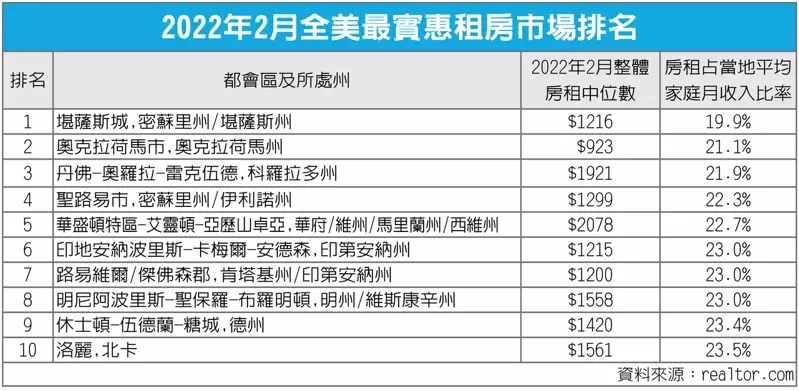
该报告指出,在美国50个人口最多的大都市中,洛丽挤入租金最经济实惠城市的前十名单。不过该报告也说明,即使在这些租金较负担得起的地区,「租金的增长速度也超过了收入,在工资中所占的比率也比以前更大。」
报告数据显示,洛丽今年的整体租金中位为1561元,比去年的1300元上涨了20.7%。此外,数据中各种类别的房型,今年的租金增幅都比去年大,譬如单间公寓(studio)目前租金中位为每月1472元,一年内增长了26.6%;一房公寓的租金中位现为1440元,比一年前上涨了22.4%;两房公寓的租金中位现在是1750元,比一年前的1440元上涨了21.7%。
如果去年签下的租约是1300元,今年租金上涨20%,变成每月要支付1560元房租,对一些人来说,这可能意味着他们必须被迫搬出原本的房子或公寓。与此同时,维克郡的房地产市场也继续飙升。WRAL电视台报导,该郡2月份房价中值飙升至42万元,创下新高。
不只房价与房租频创纪录,根据美国劳工统计局(U.S. Bureau of Labor Statistics)的最新数据,美国自2021年2月至2022年2月,通货膨胀率为7.9%,达到40年来的最高点。其他消费品的价格也在上涨,尤其是食品和汽油。
通膨难降…1月房租较去年同期涨15.2% 恐继续成长
世界新闻网
3/10/2022

近来万物齐涨的趋势压得让人难以喘息,随着新冠疫情后的经济复苏,租屋市场供不应求的情况造成去年房租涨势更加惊人;根据房地产仲介网站Redfin统计,今年1月的房租平均较去年同期增加15.2%,而且恐怕只有继续成长的趋势。
早在疫情爆发前,由于新成屋的完成率远远落后于市场需求,房租就已开始上涨;同时,房价也持续上升,使得许多原本计划购屋的租屋族打退堂鼓,也让房东顺势推动租金涨势。
随着国内民众的生活逐渐回归到疫情前的模式,新屋市场的需求在2021年急遽成长,但由于疫情影响和一系列供应链紧缩使得建设工程延宕,房客只能在供应有限的市场内以更有利的价格吸引房东。
「租屋需求扩张地太过快速,远远超越市场的供应量。」市调机构Apartment List的分析师沃尔诺克(Rob Warnock)解释:「尤其供应链在疫情间受创严重,反弹更加剧烈。」
沃尔诺克进一步指出,今年春天到夏天房租都会持续上涨,就连房价也可能创下年度最高纪录,沃尔诺克说:「如今出租公寓短缺,租金上涨的速度将会超越疫情前,不过相对2020年,疫情对民众生活的冲击和经济影响都会相对削弱许多。」
除此之外,民生必需品也难逃涨价的命运,去年的食物和能源价格都已飙升一波,加上今年俄罗斯入侵乌克兰,全球石油、天然气和小麦等原物料价格的波动更加猛烈。
虽说民众可通过民生用品开销的调整尽可能降低通膨的冲击,但房租却是无人能避免的,若无法如期支付可能造成债务的雪球愈滚愈大,对家庭的伤害更加严重,旧金山联邦储备银行 在上个月研究报告中写道:「租金与房价通涨将是整体通膨趋势下的重大风险之一。」
Rents Continue Surging: Where They’re Rising the Most
By Sharon Lurye
10/30/2021
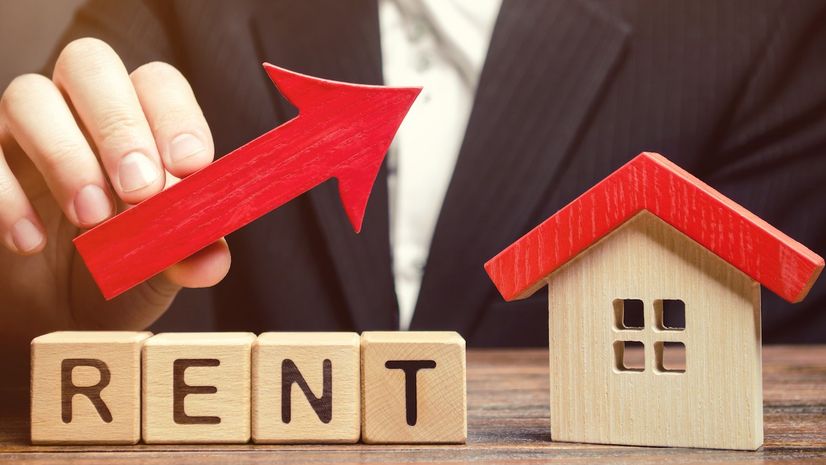
The COVID-19 pandemic sent rental prices tumbling as city dwellers fled for the hills, but the latest data shows those prices haven’t just recovered—they’re surging to a new all-time high.
Median rents jumped 13.6% compared with last year in the 50 largest metro areas of the U.S. as people start to return to cities, according to monthly rental report from Realtor.com®. Rents hit a median price of $1,654 in September, which means renters are paying $198 more compared with the same time last year and an extra $222 versus two years ago, before the pandemic began.
(Metros include the main city and surrounding towns, suburbs, and smaller cities.)
“It really highlights how challenging affordability is at this point,” says George Ratiu, manager of economic research for Realtor.com.
This surge in rent is coming at the same time that buying a house is getting less affordable, too. Home prices are at record highs and more people are returning to cities, which creates more competition and higher prices in the rental market.
In addition, the federal government ended its moratorium on evictions. This means the foreclosure rate is going up, so more people may be forced to sell their home and rent instead. It also means landlords have more power to kick out tenants and raise the rent on whoever moves in next.
However, the increase in rents does at least signal that the economy is recovering from COVID-19, as tenants come back to cities and support local businesses.
Growth was particularly high in metros such as Tampa, FL, which includes St. Petersburg, which has seen a whopping 33.3% increase in rental prices. Monthly rents were a median $1,800 in the Florida city.
“The rental market is as tough as the sales market,” says Alma Alexander, a Realtor who’s with Coldwell Banker in Tampa.
She says a growing economy and strong sports industry are attracting many people to the Tampa region. The pandemic also gave the area a boost as many folks in snowier areas who could work remotely headed for cheaper, sunnier parts of the country. But in cities across Florida, there’s simply not enough housing to meet the demand.
The other metro areas with the highest yearly growth in median rent were Miami, at 31.6%; Riverside, CA, at 26.5%; Phoenix, at 26.4%; and Las Vegas, at 25.9%.
The pandemic saw a particularly large exodus of renters from big tech hubs like Seattle and Austin, TX, since tech-related jobs are often well-suited for remote work. As of September, rents in those cities are largely back to normal, and in some cases even higher than they were at the beginning of March 2020.
In Seattle, for example, median rents dropped around $300 from March 2020 to January 2021, from $2,923 to $2,610. As of September, they’re back to almost the same price they were before, at $2,895 a month. In Austin, rents last month were around 20% higher than they were in March 2020, jumping from $1,367 to $1,647.
More people returning to these tech hubs is a good sign generally for big cities and the U.S.
“In a sense, they were bellwether markets for when rental housing would see a return toward some degree of normal,” says Ratiu.
Zillow’s zeal to outbid for houses backfires in flipping fumble
Patrick Clark and Noah Buhayal | Bloomberg
10/27/2021
Faced with the fastest-growing real estate prices in US history, Zillow Group has tweaked algorithms to enhance home flipping operations to offer higher offers.
It ended up with so many successful bids that I had to stop offering new offers for the property. Now, after buying more homes than ever in the third quarter, the company is tackling the unprocessed portion of homes that need to be repaired and sold in the face of unpleasant reality. The slowdown in price increases has cost many homes.
According to a YipitData survey, Zillow launched a record number of homes on the market in September, listing properties with the lowest markup since November 2018. According to Yipit, in the third quarter, prices fell by almost half of the US listing, indicating that inventories are lower than expected.
The shift is on display in places such as Atlanta and Phoenix, two markets where home prices are skyrocketing. Zillow’s approximately 250 active list in Phoenix is now on average 6% cheaper than the company paid for homes.
According to data compiled by Mike Delprete, a real estate technology strategist and scholar at the University of Colorado at Boulder, this represents a $ 29,000 discount on typical real estate.
“All the key indicators from Zillow over the last few months are totally meaningless,” said Del Prete. “It’s like making a decision a couple of months behind the market.”
Zillow’s newly discovered aggression was good for people like Abidemi Bolatiwa who were watching the process run in real time. According to real estate records, he sold his four-bedroom home in Phoenix to Zillow in late September for $ 531,300, paying a convenient fee that was cheaper than traditional agency fees.
Mr. Volatiwa also Opendoor Technologies, That would have paid him about $ 504,000. Ten days after Zillow bought the home, the property went public for $ 505,900. When it didn’t sell, the company cut another $ 11,000 to $ 494,900.
According to DelPrete’s analysis, Zillow’s biggest competitor, Opendoor, continues to sell more homes than it buys, while home sales in Phoenix are declining. It also performs well in Atlanta, where Opendoor lists homes with a premium of 6.5% of the purchase price compared to Zillow’s 1.3% spread.
Zillow representatives declined to comment.
The company said on October 18th: It will stop making new offers to buy a home Reduce your share by 9.4% while processing the backlog. However, analysts most often shrugged off operational stumbling blocks and stocks recovered from these losses. The home flipping business dating back to 2018 is not yet profitable.
“Prices turned them on, they were a bit flatfoot, and probably a little too aggressive about bidding,” said Brad Ericsson, an analyst at RBC Capital Markets. “They probably don’t care so much. Making money isn’t that important at this stage of the game.”
Zillow and Opendoor are practicing a high-tech spin of home flipping called iBuying. Both companies use software-based algorithms to predict changes in home prices. They charge a fee instead of a typical real estate agent’s fee and pitch to their customers about the convenience of the service. Buying thousands of homes every quarter is a complex process and requires a lot of precision to do it right.
Rich Barton, CEO of Zillow, emphasizes that it is important to make competitive offers to reach the scale needed to make a profit in the business. He lamented in an August call with investors that soaring home prices have widened the spread between the cost of Zillow buying and repairing homes and the cost of selling real estate. rice field. As a result, the company, which purchased 3,800 units in the second quarter, has set a goal of purchasing 5,000 units a month by 2024 and is offering more offers.
“We saw a rapid increase in conversions throughout the quarter as we improved the strength of our offers,” he said.
Zillow and Opendoor are practicing a high-tech spin of home flipping called iBuying. Both companies use software-based algorithms to predict changes in home prices.
Richard Flor talked to a realtor this summer about listing a three-bedroom, three-bathroom rental for about $ 390,000 in the western suburbs of Phoenix, Tolleson, Arizona. Instead, he sold it to Zillow in September for about $ 412,000 and paid 1% of the service.
He then saw Zillow make a minor repair and relist the house for $ 387,000 two weeks later.
“I was wondering,’How do they make money,’” Flor said. “Maybe they know what I don’t know.”
Here’s why Zillow won’t be buying any more homes to renovate and resell this year
By JOE HERNANDEZ
10/20/2021
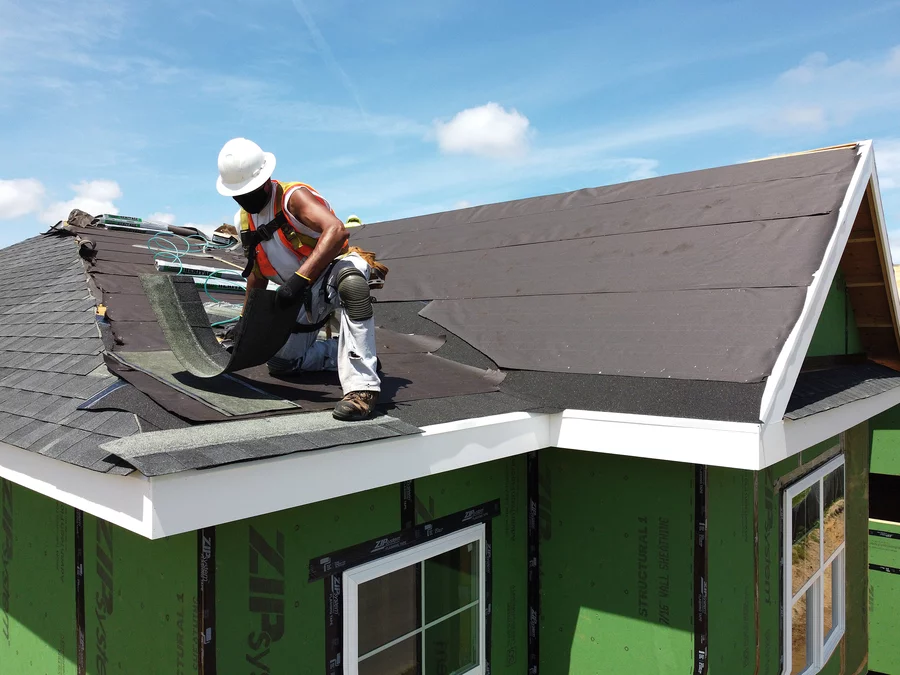
Al Bello/Getty Images
The real estate website Zillow announced it would stop buying and renovating homes through the end of the year as it works through a backlog of properties and it deals with worker and supply shortages.
“We’re operating within a labor- and supply-constrained economy inside a competitive real estate market, especially in the construction, renovation and closing spaces,” Jeremy Wacksman, Zillow’s chief operating officer, said in a statement.
“We have not been exempt from these market and capacity issues and we now have an operational backlog for renovations and closings,” he added.
Through its Zillow Offers program, the company buys homes directly from sellers, completes the necessary upgrades and lists them for sale. This lets sellers avoid having to do repairs or set up showings themselves, the company says.
Zillow, which is known for its online real estate listings, told shareholders that it purchased 3,805 homes through the program in the second quarter of this year, a major increase over previous years.
Zillow Offers, which launched in 2019, sold 2,086 homes and made a gross profit of $71 million over the same period.
The company announced on Monday that it wouldn’t sign any new contracts to buy homes through the end of 2021. Zillow said that it would still market and sell homes through the program and that it would also continue to buy houses with contracts that have already been signed but have yet to close.
The construction industry was one of many that were hit hard by the COVID-19 pandemic, which saw the cost of building materials soar. Meanwhile, the demand for homes — as well as their price tags — has surged.
While the astronomical prices of wood have decreased from their recent highs, other materials such as steel and piping remain costly or in short supply. On top of that, there is a serious shortage of construction workers.
Both the construction of new homes and the authorization of building permits fell in September compared with the previous month, according to the U.S. Census Bureau.
In an interview with Marketplace Morning Report last month, Associated Builders and Contractors economist Anirban Basu said the coronavirus was still causing problems in the housing industry. “The spread of the delta variant globally has increased supply chain issues. It means higher prices for inputs; it raises the cost of delivering construction services,” Basu said.
Zillow slams the brakes on home buying as it struggles to manage its backlog of inventory
By Anna Bahney, CNN Business
10/18/2021
Zillow will stop buying homes through Zillow Offers for the rest of the year, as the company’s iBuying program goes from full speed to full stop.
The company announced on Monday it would not contract to buy any more homes in 2021 in order to work through the backlog of homes it has already bought.
The “iBuyer” model used by Zillow and other real estate companies entails purchasing homes directly from sellers, and then re-listing the properties after doing minor work. But thanks to the current shortage on labor and materials, Zillow can’t close, renovate and resell the homes fast enough.
“We’re operating within a labor- and supply-constrained economy inside a competitive real estate market, especially in the construction, renovation and closing spaces,” said Jeremy Wacksman, Zillow’s chief operating officer, in a statement.
“Pausing new contracts will enable us to focus on sellers already under contract with us and our current home inventory,” said Wacksman.
Zillow will still market and sell the homes it has acquired through Zillow Offers, which has been on a purchasing tear this year. It bought 3,805 homes in the second quarter — a record high for the company and more than double the number of homes bought in the first quarter, according to a note to company shareholders.
Zillow, known for its online real estate listings, introduced an iBuyer program, Zillow Offers, in 2018 and now operates in 25 cities. Like other iBuyers — such as Opendoor, RedfinNow and Offerpad — Zillow Offers uses data and algorithms about the property and the market to make a cash offer on an off-market home, and buys directly from the homeowner.
IBuyers appeal to home sellers because closings can take place anywhere from 7 to 90 days after the contract is signed and can provide some certainty and control over the sale of their home without the hassle of finding an agent and prepping the house for market. According to Zillow, the fee to the seller for Zillow Offers averages 5%, but can vary based on market conditions.
Home purchases by iBuyers now account for about 1% of the market, according to a report from Zillow. The share is still a tiny part of the whole market, but shows tremendous growth over the past few years as the iBuyer share in some cities, like Phoenix, Atlanta or Charlotte, North Carolina, now tops 5%.
Zillow wasn’t alone among iBuyers in buying a lot of homes this year. IBuyers bought more houses, at higher prices, in the second quarter of this year than in any other quarter, according to research from Mike DelPrete, an independent real estate technology strategist and scholar in residence at the University of Colorado Boulder. That has surprised some skeptics who did not think the iBuyer model would be appealing to home sellers in a hot market.
His research suggests that sellers are drawn to the certainty and ease of iBuying and the market conditions fueled its growth.
Zillow’s move to halt purchases is surprising, he said, particularly because it is so sudden.
“iBuyers have access to a tremendous amount of data, they can see months into the future and plan their inventory,” said DelPrete. “So the fact that Zillow didn’t see this coming and wasn’t able to make adjustments before it had to resort to an iBuying lockdown is pretty surprising.”
This shift, he said, demonstrates how difficult this business model is to scale up. Large iBuyers need to be skilled at both managing billions of dollars in capital, but also the logistical specifics of prepping a home for sale, down to drywall and painting and closing deals.
“There is only so much that technology can do,” said DelPrete. “At the end of the day you need people to process a lot of transactions.”
However, the halt appears to be a Zillow-specific problem, not an iBuyer industry problem, DelPrete said.
“Zillow just kept barreling down and now they’ve hit this wall,” he said.
This is not the situation a growth-focused company wants to be in, he said.
“If you’re trying to be number one in the market, slamming on the brakes is one of the worst things you can do,” said DelPrete. “You want to make some adjustments before you get to that point — slow down, switch gears. This is not the preferred outcome for Zillow.”
Opendoor, the leading iBuyer ahead of Zillow at a distant second, said in a statement it is still open for business.
‘Insatiable demand’ for warehouse space continues in NJ
Rents surge to record high as developers scour state for booming logistics industry
By JON HURDLE
10/16/2021

Rents surged and vacancies dropped to a record low for warehouses and other industrial buildings in north and central New Jersey from June to September, a new report said Wednesday, as demand from e-commerce continued to fuel the state’s red-hot market for logistics space.
The asking price for industrial rents rose 15.6% to a record $10.72 per square foot while vacancies fell to 3.4% from 3.8% only three months earlier. For warehouses, which account for about three-quarters of the overall industrial market, the vacancy rate was even lower, at 2.9%, according to the report from Newmark, a commercial real estate company.
As in the first half of 2021, the growth was again driven by very strong demand from logistics companies for space to store and distribute an avalanche of goods ordered online.
“Insatiable demand from ecommerce, corresponding with a long-term shift in consumer spending habits towards online spending and away from traditional retail stores remains a key driver of leasing activity,” the report said.
Demand for logistics space has been strong for five years but was fueled further over the past year by online shopping during the pandemic. It has also been driven by the state’s proximity to Port Newark-Elizabeth where one of the nation’s largest volumes of consumer imports enters the country, and by New Jersey’s position at the heart of the populous Northeast market.
While the boom has created thousands of jobs, including some 50,000 at Amazon alone, it has also sparked protests and lawsuits in some communities where residents fear that local roads will be choked by new truck traffic, and that remaining rural enclaves will be occupied by giant warehouses that may cover a million square feet or more.
In the Legislature, public concern that warehouses affect areas beyond the towns where they are built has also spawned a bill co-sponsored by Senate President Steve Sweeney (D-Gloucester) that would require towns facing a warehouse application to alert neighboring municipalities and try to win their support for the project.
Numbers show big-time growth
The new data shows the boom is only accelerating. Industrial space under construction, almost all of which was for warehouses, rose to 13.9 million square feet in the latest quarter from 13.4 million in the second quarter of 2021. Despite a supply shortage, the amount of industrial space leased in the first three quarters of this year, 28 million square feet, exceeded that for all of 2020.
In another key indicator of the strength of demand, net absorption — the difference between the amount of industrial property that became occupied during the quarter, and that which became vacant — jumped to 4.7 million square feet in the latest quarter from 3.1 million square feet in the previous three months.
“It’s remarkable to me that it keeps going up,” said Tim Evans, director of research at New Jersey Future, a nonprofit that advocates for “smart growth.” He said the warehouse boom can’t be fully explained by the surge in online shopping during the pandemic, and may have also been fueled by an increase in the volume of imported goods arriving at Port Newark-Elizabeth from Asia since the Panama Canal was widened to accommodate bigger ships in 2016.
Evans predicted that the continued high demand for warehouse space will result in both vacant and previously developed land being obtained for an industry that wants to be as close to the port as it can. That process may involve “second-generation” redevelopment of sites that first held factories, then became office parks, and would now be occupied by warehouses.
“As factories close to the port get used up, they might start buying second-generation redevelopment sites like office parks,” he said.
The report said there’s a “widening imbalance” between supply and demand, especially in sub-markets where available land is limited. They include the Meadowlands, where rents jumped 28.5% in the latest quarter compared with a year earlier. The report predicted that the sharply higher rents there will spur developers to redevelop land or reuse existing buildings.
Major transactions included 840,000 square feet leased to Peloton, the fitness equipment maker, at Linden; 511,000 square feet in Warren County to Alan Ritchey, a logistics provider, and 326,000 square feet in the Meadowlands taken by TJ Maxx, a clothing retailer.
In the warehouse sector specifically, the highest asking rent among 21 local markets was $14.73 per square foot in the Meadowlands, followed by $14 in the market around New Jersey Turnpike Exit 12 where the vacancy rate was virtually nonexistent at 0.1%.
No end in sight
There’s no sign that high rents and low vacancy rates will let up any time soon, given continuing high demand from logistics companies, the report said. It forecast that developers will continue to encounter rising construction costs, shipping delays and labor shortages.
“In the coming months, robust demand from ecommerce and logistics companies is expected to maintain a record low vacancy rate, driving further growth in warehouse rents,” it said.
Micah Rasmussen, a Rider University professor who led a successful campaign against a planned warehouse in Upper Freehold earlier this year, said people should consider whether New Jersey is getting over-developed — in light of the ongoing warehouse boom and the devastating flooding caused by Tropical Storm Ida.
“I think the shortcomings of our over-development became much clearer to a lot of people during Ida,” he said. “We need to rethink what we’re doing, and given what’s happening in the market, it seems like the perfect time for us to do that.”
In N.J., the fall housing market is starting to look better for buyers
BY ALICIA SMITH
10/08/2021
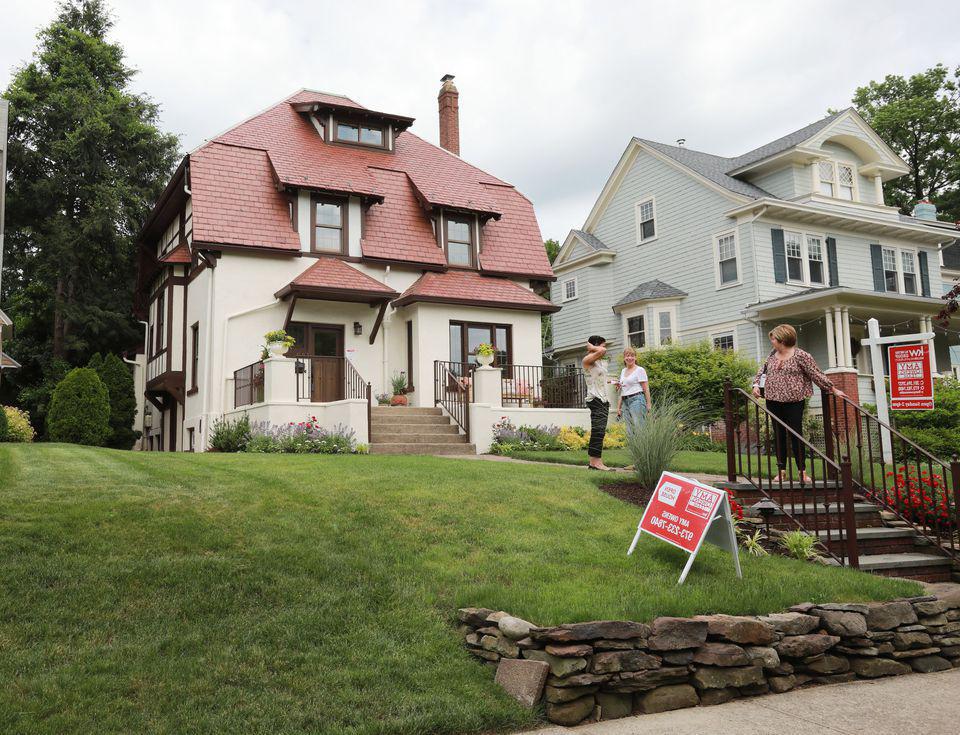
The red hot residential real estate market is beginning to cool slightly, and this trend is expected to continue for the remainder of the year.
Low interest rates, low inventory, and buyers looking to leave urban areas, such as New York City, for more space in the suburbs, were largely driven by cheap interest rate rates and low stock levels in New Jersey City.
However, according to Jeffrey Otteau, a real estate economist and president of the Otteaux Group, the home buying demand is running at slowed pace in New Jersey four months later.
He explained that Its not that it’s collapsing, he said. It’s normalizing.
According to Otteau’s data, contract sales were down statewide by 12 percent in June, 22 percent on July, 16 percent, and 22 cents in August for the first three weeks of September.

Sales are lowering, according to him, because home prices have risen so much that they are unaffordable even with low interest rates. And urban flight in the middle of the epidemic, which brought city-dwellers who wanted more room to the suburbs, has ended.
Migration from the city to the suburbs is now reversing as cities renown, Otteau said. As employers are advising workers to return to the office, were starting to see housing shift back in toward the city.
According to Otteau’s data, contract sales in Hudson County have risen by 35% every year to date, according to him.
And according to New Jersey Realtors August report, closed sales in Hudson County were up 17.1% in August alone, despite closed doors falling by 10% statewide.
Irene Barnaby of Compass in downtown Jersey City said she’s seeing buyers who were renting in the area and want to profit from low interest rates, international buyers, and some of the situations when people who fled Hudson County” traffic now want back.
One couple she worked with sold their three-bedroom apartment in downtown Jersey City and moved to Maplewood in May 2020. They called her about 6 months ago and stated they sold their Maplewood house and were returning to Jersey City.
They missed the vibrancy and being in the center of the action, and having access to New York City, Barnaby stated.
People who are buying in Hudson County still want space, she added. The majority of people are searching for two or more bedrooms and want some sort of outdoor space. She said, “One-bedrooms are difficult to sell,” and she remarked.
Another factor slowing home sales overall is that home prices rose 12% in 2020 and are on the verge of risen 17 percent this year, according to Otteau, stating that prices grew an average of about 3% for each of the previous 7 years.
House prices can only rise as fast as salaries, he said. Banks won’t lend buyers enough money to afford a house after ten years of that (faster than salary growth). There must be a correction to follow, if home prices rise faster than salaries.
Otteau predicts a price increase of 5% in 2022 and regress of 5 percent in the 2023.
However, he said, it’s still a good moment to purchase. He explained, “You’re going to get a lower interest rate now than in the future,” he added.
According to Reuters, American Federal Reserve policymakers may be able to raise interest rates next year.
According to Otteau’s statistics, the highest segment of the housing market is homes in the $1 million to $2.5 million sales range, which is responsible for approximately 45 percent of sales, followed by the $600,000 to $1 millions sales spectrum, with 30 percent sales.
Those buyers are chasing up and, in the process of purchasing, they’re also increasing the inventory of homes on the market because they sell their existing homes.
People were concerned about job security, so they didn’t want to take on a larger mortgage, Otteau said, because trade-up buyers were not selling last year. They were concerned that strangers gathered across their houses in the middle of a health crisis.
However, the trade-up market hasn’t completely exploded.
Missy Iemmello, office manager for Weichert Realtors in Morris Plains, whose 120 agents work in the Morris, Sussex, Warren, Bergen, and Essex counties, said in September that she saw a rise in inventory that quickly slowed.
We were all delighted. We believed they’ve been anticipating this year, Iemmello added. Then it was simply a short blimp, all of oh, this was subsequently merely en route to victory.
Hurricane Ida, according to Iemmello, stopped the trend.
People got water where they never had water before, she explained. I believe we should see inventory numbers increase in the following weeks.
Frustrated House Hunters Are Giving up on Buying Only to Face an Expensive Rental Market
By Aly J. Yale
9/22/2021

Cramped in a one-bedroom, new parents Kristina and David Mahon were desperate to buy a larger home. But after scouring the Pompano Beach, Florida market for nearly a year (and losing out on 20 houses in the process), the pair eventually gave up.
Now, the couple — with a 10-month old baby in tow, no less — are renting, a decision Kristina says they felt “forced” into.
“I feel like I’m wasting money for something that’s not mine,” Kristina says. The rental“options were very limited, and the prices were on the high side of what we were comfortable spending on a rental.”
The Mahons’ is a common storyline these days, according to those in the industry. Burned-out house hunters are tired of bidding wars, rising prices and dwindling options and are bowing out of the purchase market, opting to rent instead.
“It’s common given the current market and environment that we are in,” says Kaley Tuning, the Native Realty agent who worked with the Mahons. “It just becomes frustrating for the everyday buyer. I’ve had buyers bid upwards of $40,000 over asking price and still get outbid.”
Unfortunately, the pivot to renting isn’t always easy. While the move may afford frustrated buyers time to wait out the competitive housing market, it often means entering an equally hot rental scene — one where rising rents and dwindling supply are growing concerns.
According to Realtor.com, median national rents grew a whopping 11.5% between August 2020 and August 2021. And rent applications? Those are up as much as 95% in some cities, according to apartment listing platform RentCafe.
For hopeful homeowners, it’s made for a unique catch-22 that’s as frustrating as it is costly.
Rents are on the rise
It’s no secret the housing market’s been hot this year. The purchase market has boomed in nearly every corner of the nation since last spring. Home prices are up 17% over the year, and inventory, while improving, is still near record lows.
The rental picture has been more mixed, though. At the start of the pandemic, vacancies in big cities rose and prices dropped, while demand for suburban rentals skyrocketed. Now, rents are bouncing back across the country, reaching well above pre-pandemic levels in many areas.
According to Realtor.com, the typical rent now clocks in at $1,633 per month — $169 more than this time last year and almost $200 more than 2019’s numbers. And in nearly half of the country’s biggest cities? Monthly starter home payments are more affordable than average rents.
The hot housing market has a lot to do with this spike in rent costs. With rising home prices and limited for-sale listings, more and more buyers are stepping back. This puts pressure on rental inventory and drives up rents.
As Lisa Harris, an agent at RE/MAX Center in Braselton, Georgia, explains, “Fewer homes listed for sale and much higher prices for them have kept many want-to-be buyers in their rental units, taxing the rental supply.”
The pandemic plays a role, too. Eviction bans have kept many non-paying renters in place, tying up units for much of the last year. While the CDC’s eviction moratorium was shot down late last month, the experience has made many landlords warier than ever.
“Not only have the prices increased, but the demand on tenant screening seems to be getting much more stringent,” Harris says. “Landlords are seeking tenants with higher credit scores, higher deposits, no pets, a clean criminal history and more.”
The trickle-down of higher rents
Alex Lashner, like the Mahons, has experienced the difficult rental market firsthand. She even had to expand her rental search to account for price increases and is now looking as far as 90 minutes from her office just to stay on budget.
“I’m hoping it will be a short-term sacrifice so I can buy closer to my workplace a few years down the line,” she says.
Lashner was originally looking to buy her first home somewhere in Bucks County, Pennsylvania, but due to the competitiveness of the market — and her refusal to waive contingencies or overpay (as many buyers are forced to do lately), she lost out on every property she bid on. She finally opted to rent, only to find rising prices there, too.
“I’m frustrated that buying a three-bedroom home in my budget is cheaper than renting when you compare the monthly costs of a mortgage, property taxes and HOA fees versus the rental costs for a two-bedroom or even a one-bedroom apartment,” Lashner says. “That’s where my real sticker shock is.”
Rising rents are more than just a budgetary strain for hopeful buyers, though. They also make it harder to save, which could push back those homebuying goals even further. The Mahons are one household in that camp, something Kristina calls “frustrating.”
“Instead of us paying down our own mortgage and building equity, we are paying someone else’s mortgage,” she says. “For the next year or as long as we are renting, we will not be able to save as much as we had hoped.”
Buyers who are forced to sign long-term leases have another dilemma, too: What if mortgage rates go up?
Interest rates have been hovering near historic lows for months now and have played a major role in boosting buyer demand. Kristi Nowrouzi, a mortgage loan officer with Geneva Financial, says many buyers who have backed out of the market recently are concerned those conditions could change.
“There’s a fear of missing out on the low-interest-rate environment,” Nowrouzi says. “Inflation is blowing up and who knows what rates will look like next year at the end of an annual lease agreement.”
What’s the solution?
One option for buyers facing sky-high rents is to opt for a month-to-month lease. The flexibility usually comes with a slightly higher monthly rent, but it ensures you can act quickly should the right house hit the market.
“By doing a month-to-month lease, even though rent might be slightly higher than signing a long-term lease, they can be ready to take action,” says Shmuel Shayowitz, president and chief lending officer at Approved Funding, a mortgage lender in New Jersey. “They can also continue to actively look for homes and, even if pricing doesn’t soften, be in a better position to act.”
Fortunately, strategies like this might not be necessary for long. Buyers still face plenty of challenges, but recent data points to growing housing supply — particularly in the starter home segment. Existing home sales have also slowed, falling 2% in August, and price growth has decelerated as well. According to Realtor.com, 17% of all listings had price reductions in August.
“The market is absolutely shifting now, and prices are decreasing a bit and sellers aren’t getting as high price per square feet as they were a few months ago,” Nowrouzi says.
A completely cooled-off market, though? That could be a long way in the future. Until then, Tuning says, “Patience is a virtue.”
为解住严重宅荒 美联邦政府要盖10万户平价宅
来源:经济日报
9/02/2021
在美国房价持续高涨之际,白宫官员表示,美国政府为纾解严重住宅荒,将采取一系列立即可实施的步骤,以现有经费和权力,在未来三年兴建、销售10万户平价住宅。
路透引述官员说法报导,这套计划最快1日宣布,将聚焦于扩大对个人和非营利机构销售房屋,同时对大型投资人买房设限。第2季全美各地每售出六户住宅,就有一户被投资大户买走。
美国房屋需求在新冠肺炎疫情爆发初期激增,反映民众为居家办公和学习购置更宽敞的房子。但待售屋不足和供应链瓶颈把房价推得更高,租金行情跟着水涨船高,加重家庭财务负担。白宫官员说,全美平价住宅估计短缺多达400万户。
白宫官员表示,美国总统拜登(专题)已提议,斥资逾3,000亿美元增建200万户平价住宅,这项措施是3.5兆美元基础建设投资案的一部分,正在国会审议中。但拜登希望推动立即可行步骤。
这套新计划将涵盖乡村与都会地区的住宅建案,重点摆在平价房市,希望能协助房屋自有率偏低的有色人种族群。
此计划将由美国住宅与都市发展部(HUB)部长法吉(Marcia Fudge)宣布,具体行动由该部、财政部及房贷机构房利美(Fannie Mae)与房地美(Freddie Mae)等联邦监管机构共同规划。“两房”合计占全美11兆美元房贷市场的一半。其中,一大关键步骤是重启曾由财政部与HUB合办但在2019年结束的“风险分摊计划”,该计划让各州住宅金融机构能扩大提供低利贷款,促进兴建平价住宅。
此计划也将提高组合屋及二至四户多户型不动产的供应量,希望透过房地美扩大融资达成目标。同时也将采取行动,限制对大型投资人销售一些由联邦住宅管理局(FHA)提供担保的不动产。
拜登政府另打算与各州和地方政府合作运用现有联邦资金,并协助减少排他性分区(exclusionary zoning)等阻挠提高住宅供应量的做法。
White House tackles housing shortage with plan for 100,000 affordable homes
By Andrea Shalal
9/02/2021

WASHINGTON, Aug 31 (Reuters) – The Biden administration is taking steps to address a severe housing shortage in the United States by creating and selling 100,000 affordable homes over the next three years using existing funds, the White House said on Wednesday.
The moves will focus on boosting home sales to individuals and non-profit organizations, while limiting sales to large investors, who scooped up one in six homes sold in the second quarter, according to a White House statement.
Demand for housing soared early in the pandemic as Americans sought more spacious accommodations for home offices and home schooling, but a shortage of homes for sale and supply chain bottlenecks have driven housing prices sharply higher.
Rental prices, which typically follow the lead of house prices, are also a big concern, given that even before the pandemic 11 million families – or nearly a quarter of all renters – were already spending more than half their income on rent, according to the White House.
The United States has an estimated shortage of as many as 4 million affordable housing units, White House officials say.
U.S. President Joe Biden has proposed spending over $300 billion to add 2 million more affordable housing units as part of a $3.5 trillion investment package being considered by Congress, but wanted to push forward with immediate steps that could be taken now, the White House said.
The plans will cover rural and urban housing projects, with a focus on aiding communities of color, where home ownership rates have lagged historically.
U.S. Housing and Urban Development (HUD) Secretary Marcia Fudge will announce the measures after touring a new five-story affordable housing complex in Philadelphia on Wednesday.
Fudge called the initiatives “significant downpayment” on Biden’s commitment to boost the supply of affordable rental housing, expanding access to capital for state Housing Finance Agencies, empowering local communities to build more affordable housing and promoting equitable housing policies.
Specific actions are planned by Fudge’s department, the U.S. Treasury and agencies such as Fannie Mae and Freddie Mac, which will increase financing opportunities to enable more Americans to purchase homes, the White House said.
One key step is the revival of a joint Treasury-HUD “Risk Sharing Program” that ended in 2019 and that will enable state housing financing agencies to provide more low-cost capital for affordable housing development.
The plans will also boost the supply of manufactured housing and 2-4 unit properties by expanding financing through Freddie Mac, while taking steps to limit the sale of some U.S. Federal Housing Administration-insured properties to large investors.
Investor purchases, which have been as high as one in every four homes in some communities, have driven up prices for lower-cost houses and triggered fierce competition for starter homes, the White House said.
The administration also plans to work with state and local governments to leverage existing federal funds, and help reduce exclusionary zoning and other practices that have discouraged efforts to boost the supply of housing, the official said.
The Federal Housing Finance Agency “will begin to study the interaction between exclusionary zoning and our regulated entities,” said acting Director Sandra L. Thompson.
如何计算一个投资房产的租金回报率?
By Willy Rong
3/07/2021
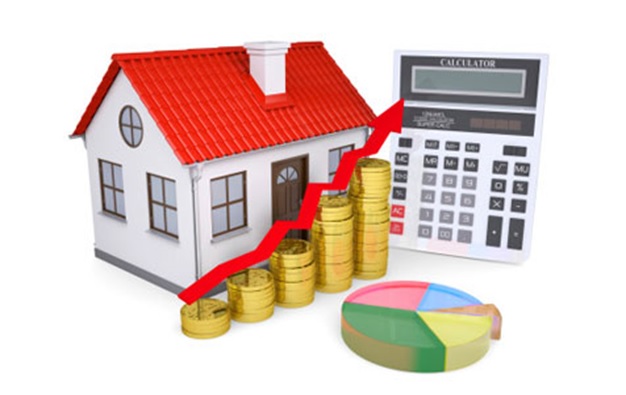
一直以来都有人问我,如何计算一个投资房产的租金回报率?我答过,但总是似是而非。
今天就这个问题给出我的计算公式Return Of Investment (ROI),仅供大家参考。
这个问题要从两方面讨论,看你是全额现金买房?还是贷款80% 买房?
(全额现金买投资房产)租金回报率 = (12月的租金 – 一年的各种花费)/ 买房价
(贷款80%买投资房产)租金回报率 = (12月的租金 – 一年的各种花费和贷款 )/ (
20%首付+ Closing Cost )
我们还是以一个$38万美元买房实例来计算,比较直观:
房子开支预算:
HOA $38/月; 保险 $120/月; 税 $356/月; 维修 $100/月。
共计 $614。
贷款 80%, 约每月还贷$1500;
租金每月$2350;去掉开支 $614; 每月净收入 $1736;
一年的总收入 $20832。
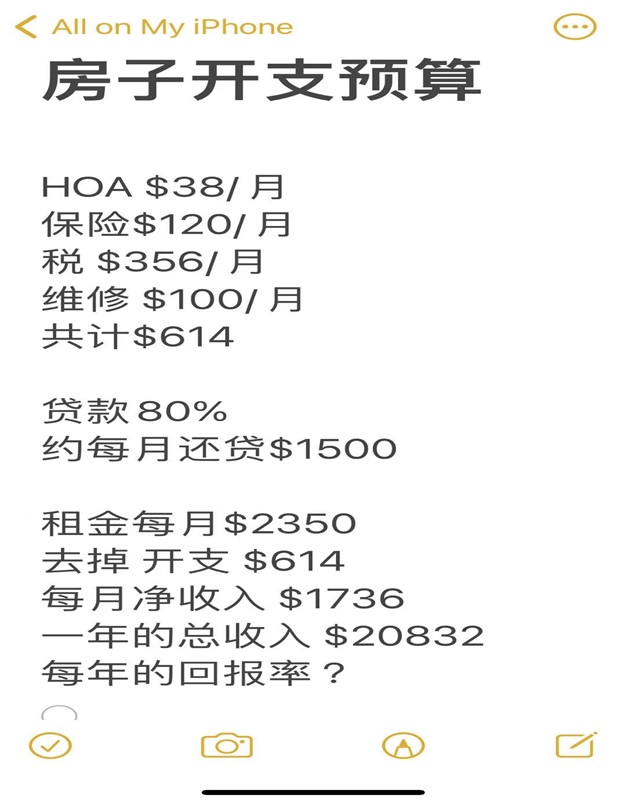
问:一个$38万美元的房产,每年的回报率?
(全额现金买投资房产)租金回报率 = (12月的租金 – 一年的各种花费)/ 买房价
$38万美元房子的租金回报率 = 一年的总收入 $20832 / 买房价$380,000 = $0.0548
全额现金$38万美元房子的租金回报率一年约为:5.5%;
(贷款80%买投资房产)租金回报率 = (12月的租金 – 一年的各种花费和贷款 ) / (
20%买房首付 + Closing Cost)
$38万美元贷款80%房子的租金回报率 = (一年的总收入$20832 – $18000) / (首付 $
76000 + $5000 Closing Cost ) = $0.0349
$38万美元贷款80%买投资房产的租金回报率一年约为:3.5%.
这个$38万美元的房子在最好学区,房子升值潜力大!
考虑到加上房子产权equity 上涨的因素,一年在6%-8%。所以要加上一个Equity 增值
率,换句话说,是用$81000 买了一个$38万美元的房产,是用杠杆买的房子。
这里有2个概念:一个是租金回报率;一个是Equity 回报率;
利用杠杆买房,就要让银行在这个房子上也赚一些钱,所以贷款租金回报率3.5%.要低
于全额现金租金回报率5.5%,这个逻辑是对的,那个2% 回报率的差让银行赚去了。
什么是智慧?智慧就是解决问题的能力!
能够把一个复杂问题简单化,用直白的方式讲清楚,这也是智慧。
现在亚特兰大地区(佐治亚),一个房子的租金回报率大概在3% ~ 6%左右,真心话,
投资房净租金回报率6%是一个不错的回报。
你若嫌上面二手房一年的租金回报率还低,你可以全现金买126包租5年的项目,一年的
租金回报率为净6%。
下面是在网上找到的租金回报率计算器,大家可以去练习:
租金回报率
https://www.calkoo.com/zh/zujin-huibao-lu

提示:算大账不算小账,可能公式不够严谨,但逻辑是对的。
Source: http://www.mitbbs.com/article_t/Georgia/31320547.html

















